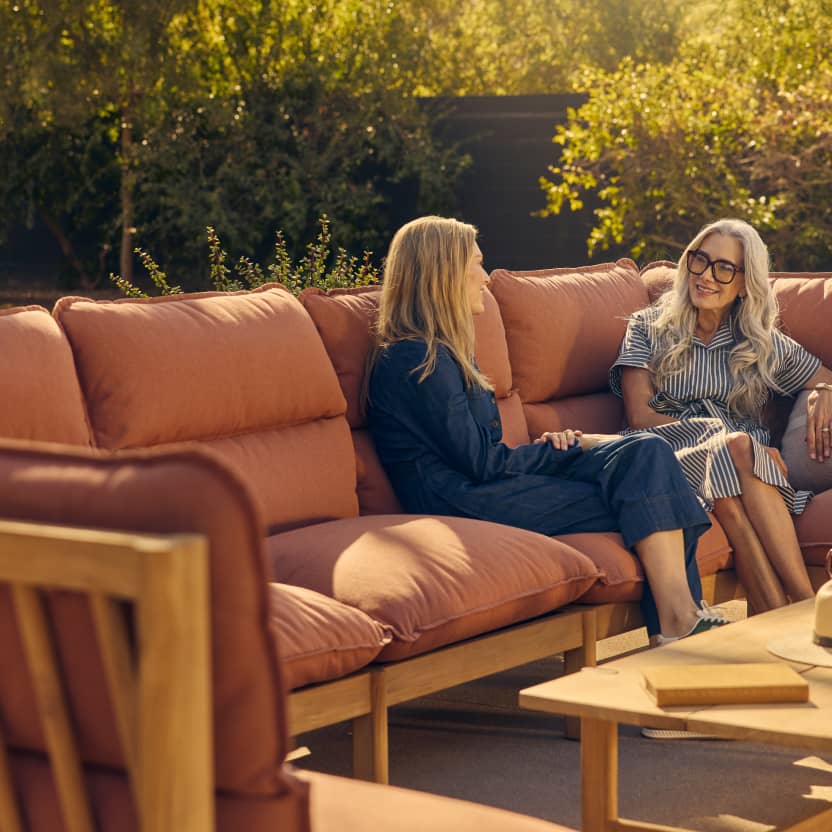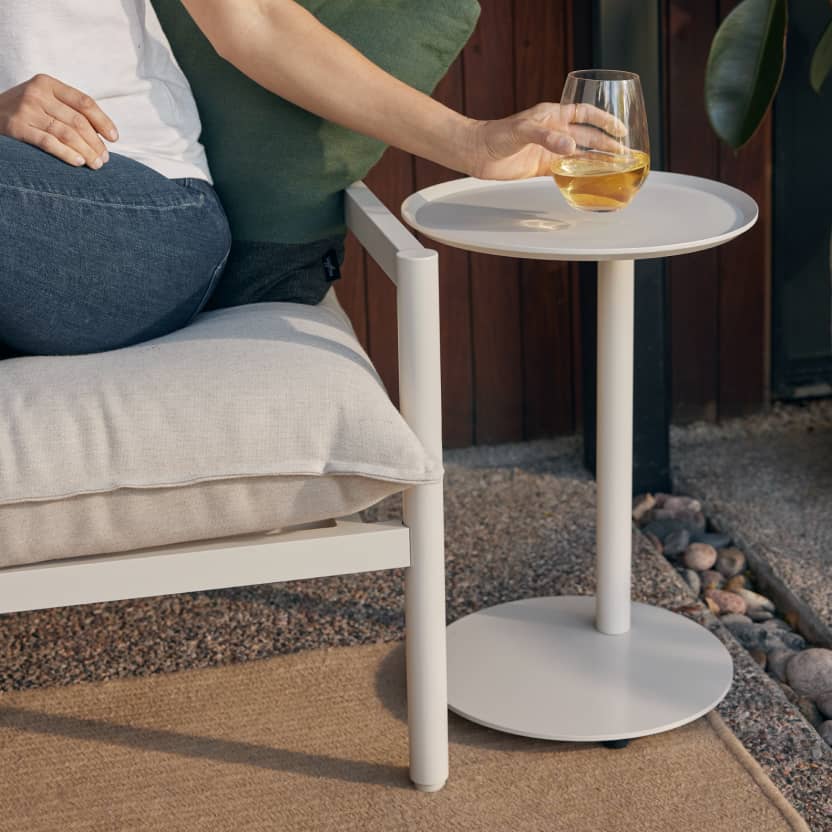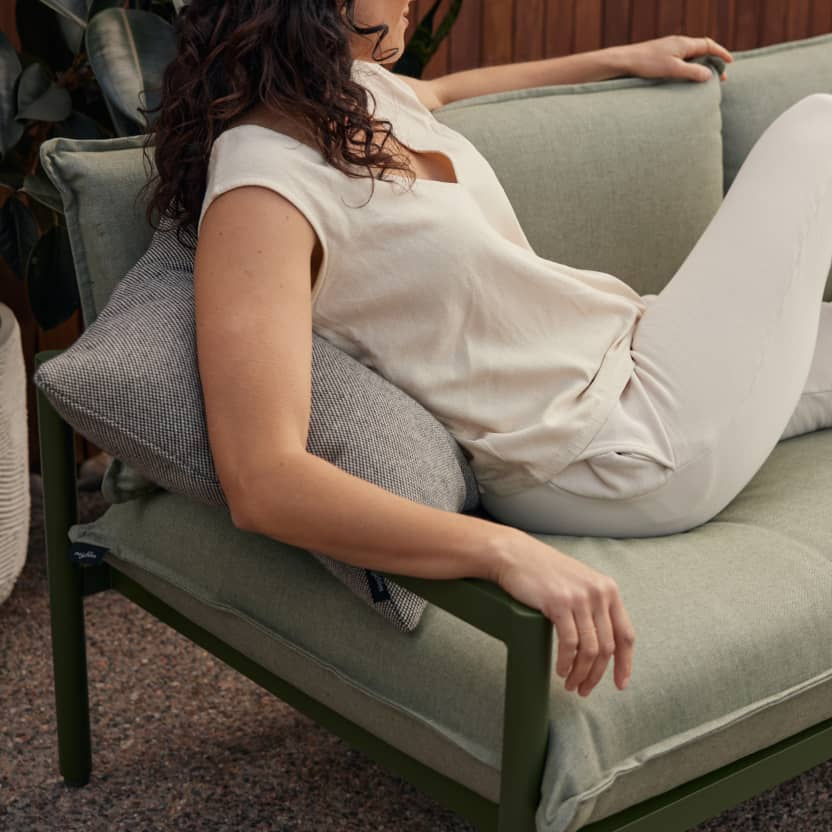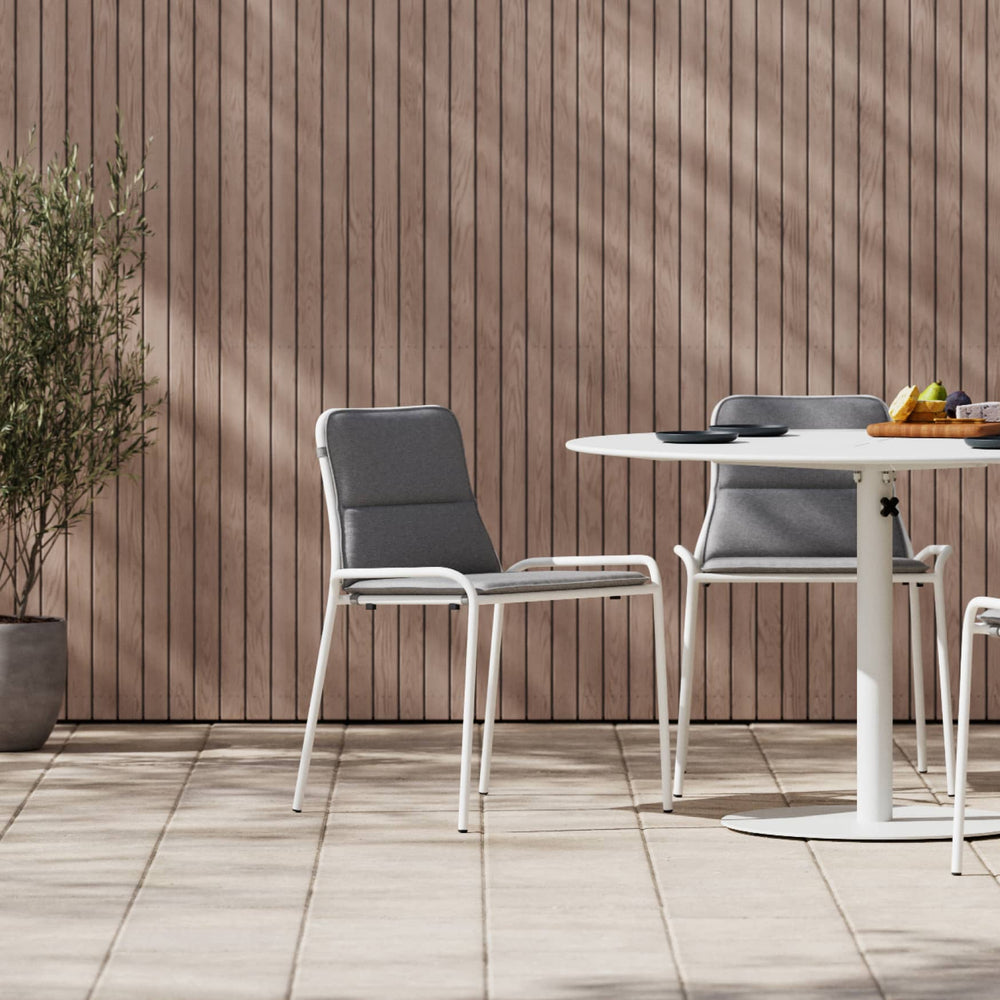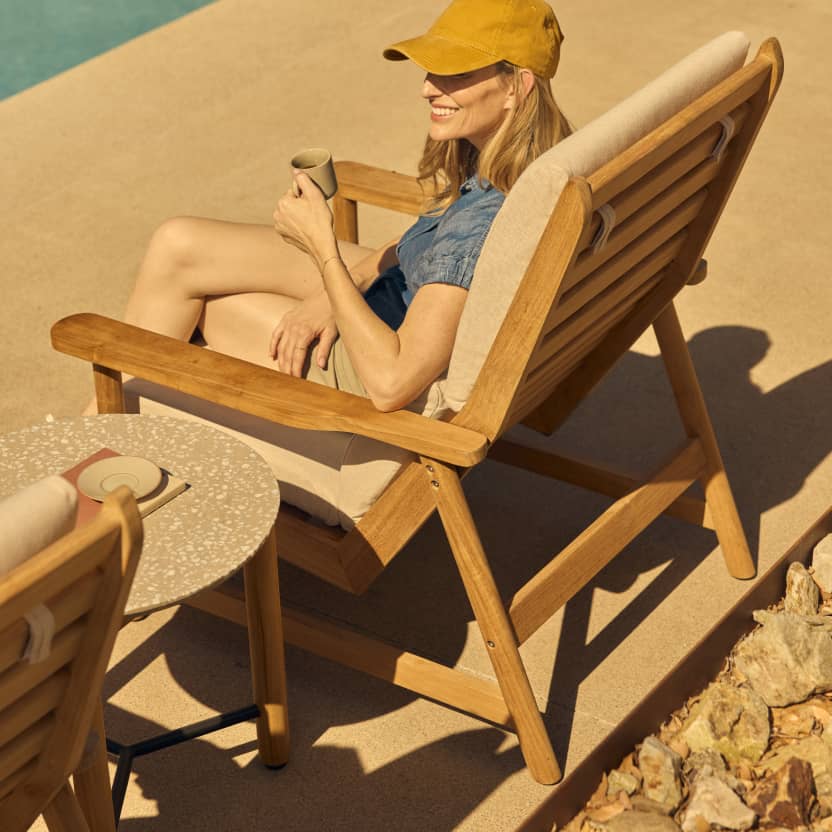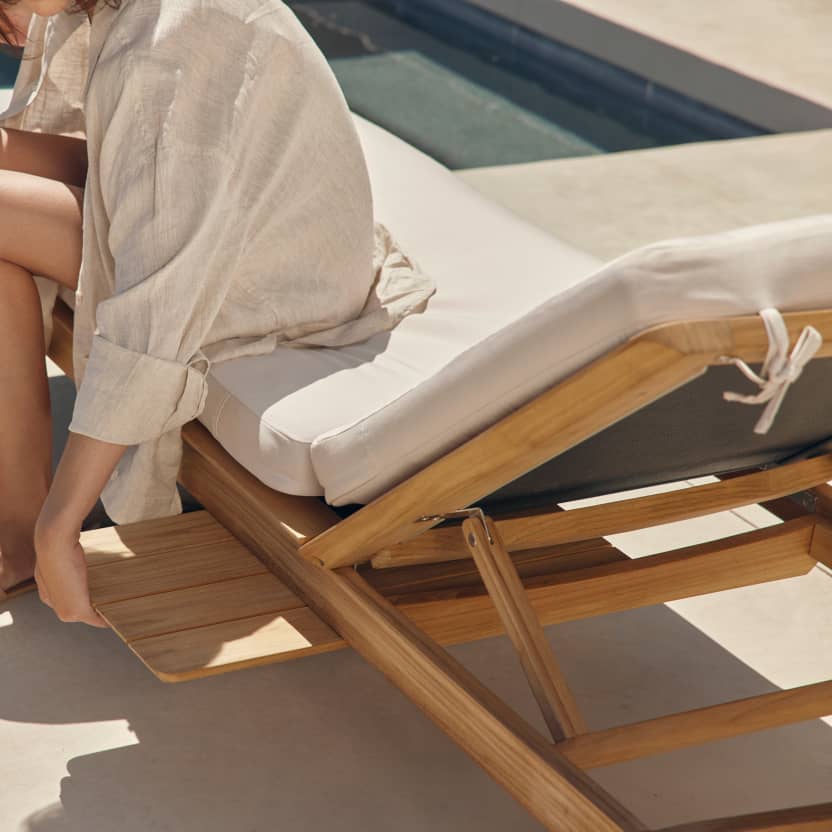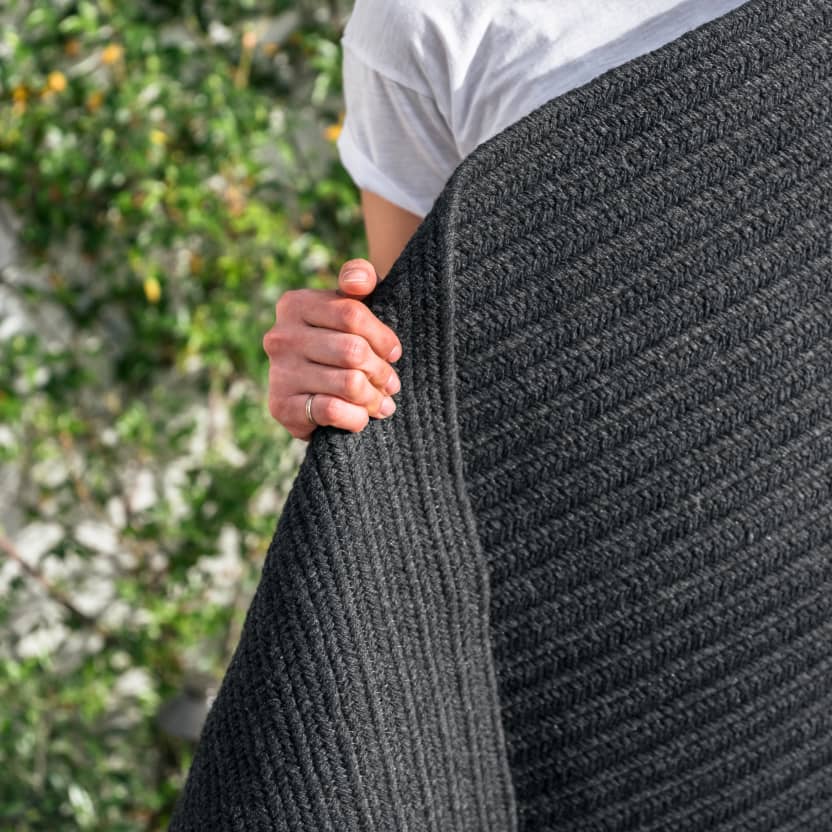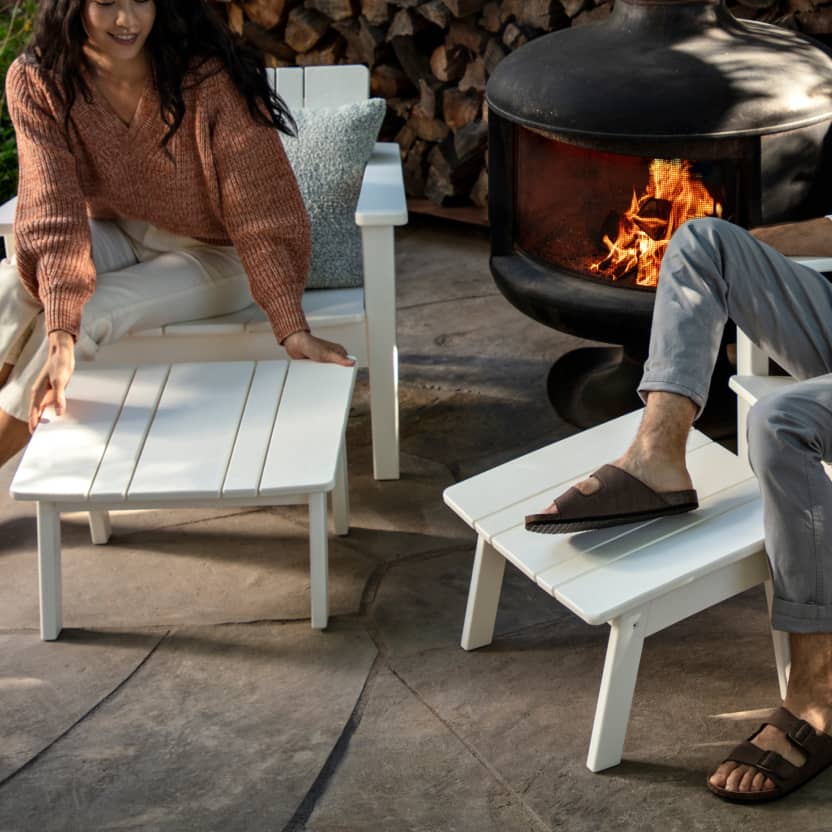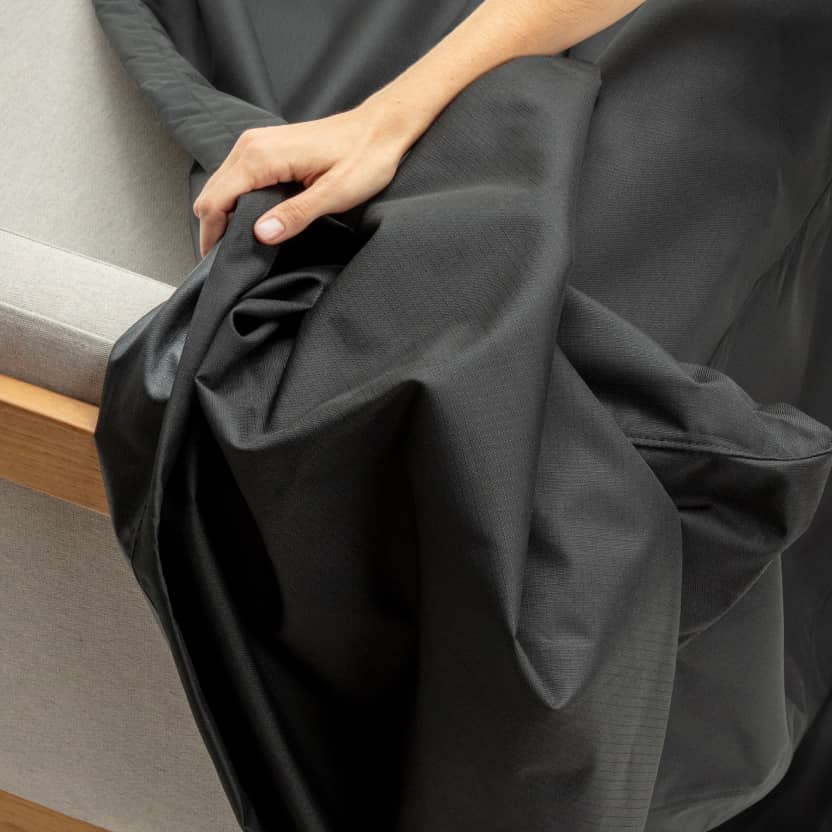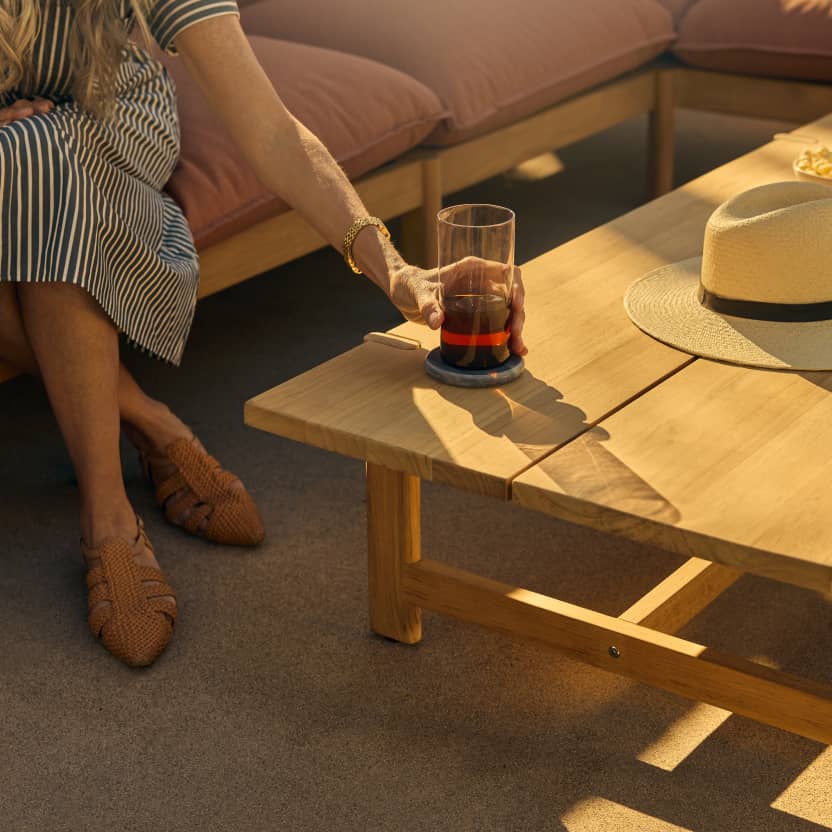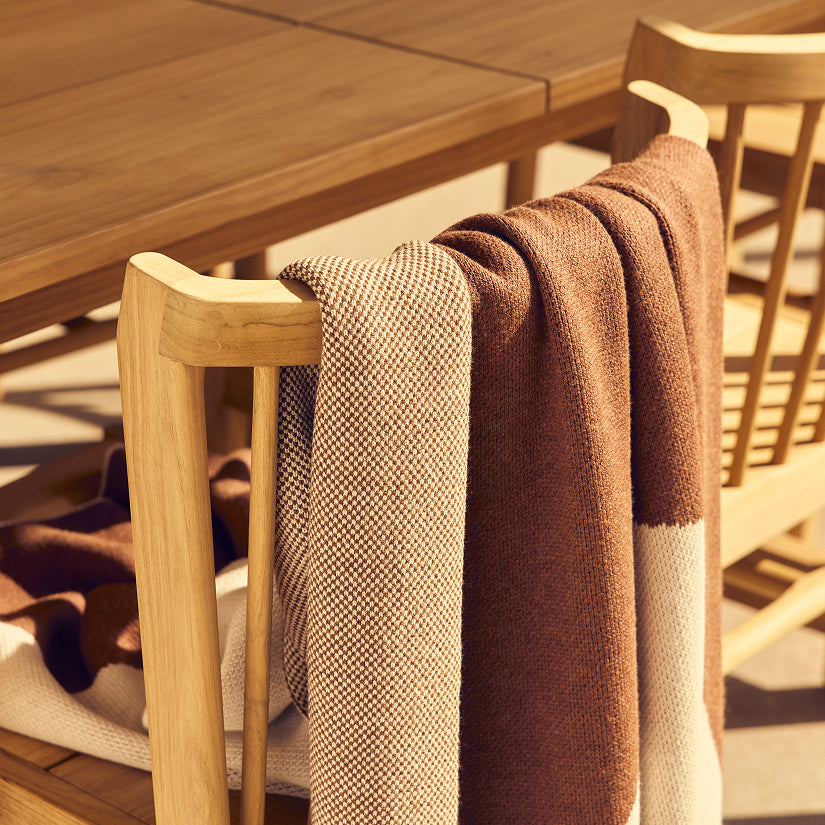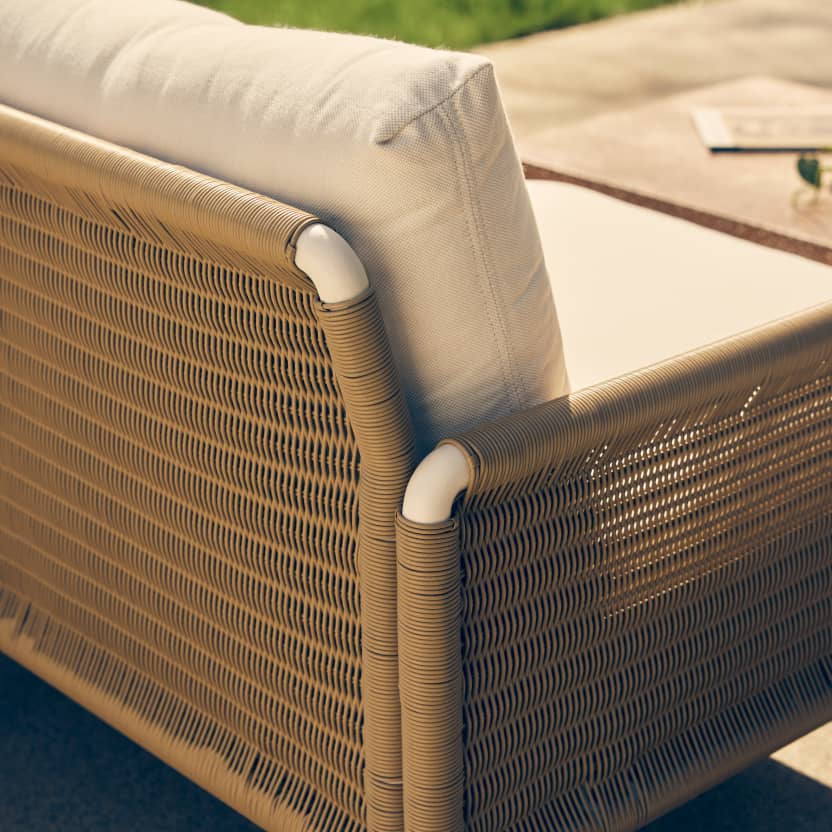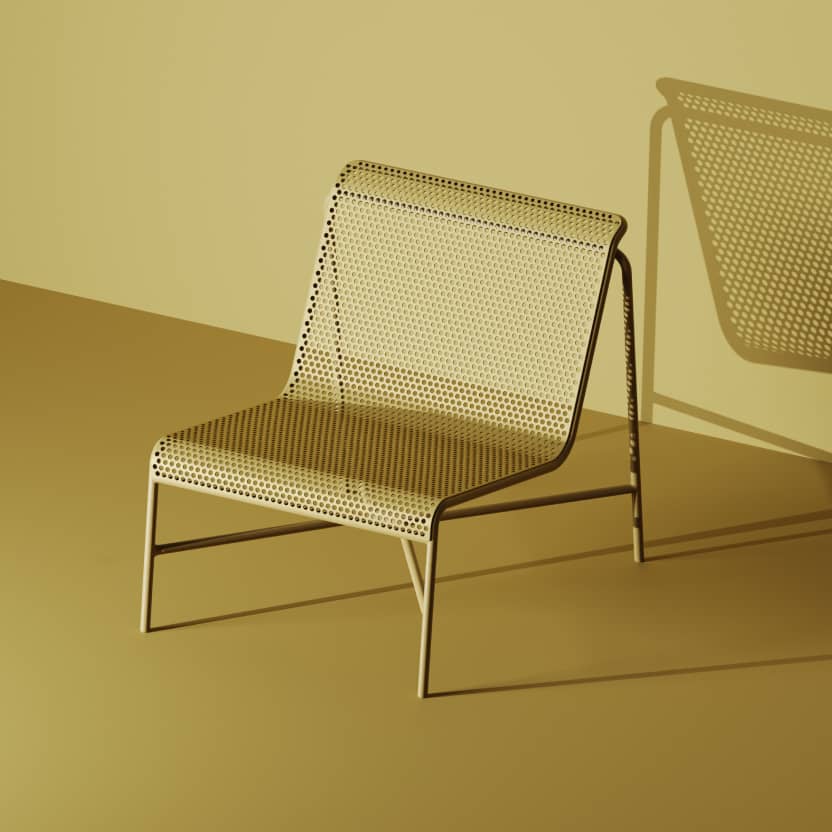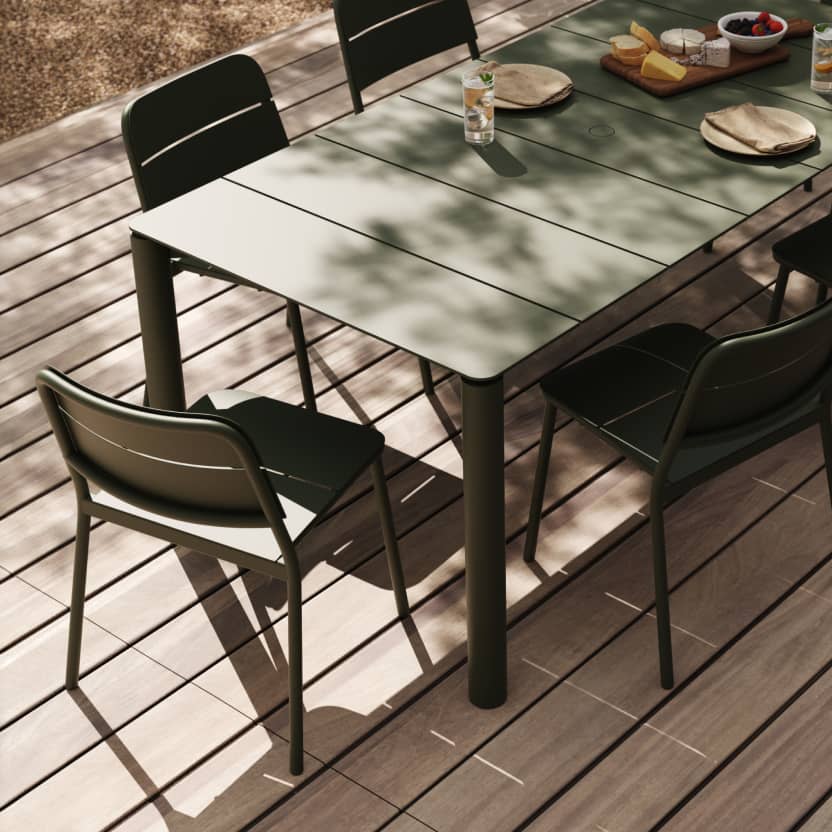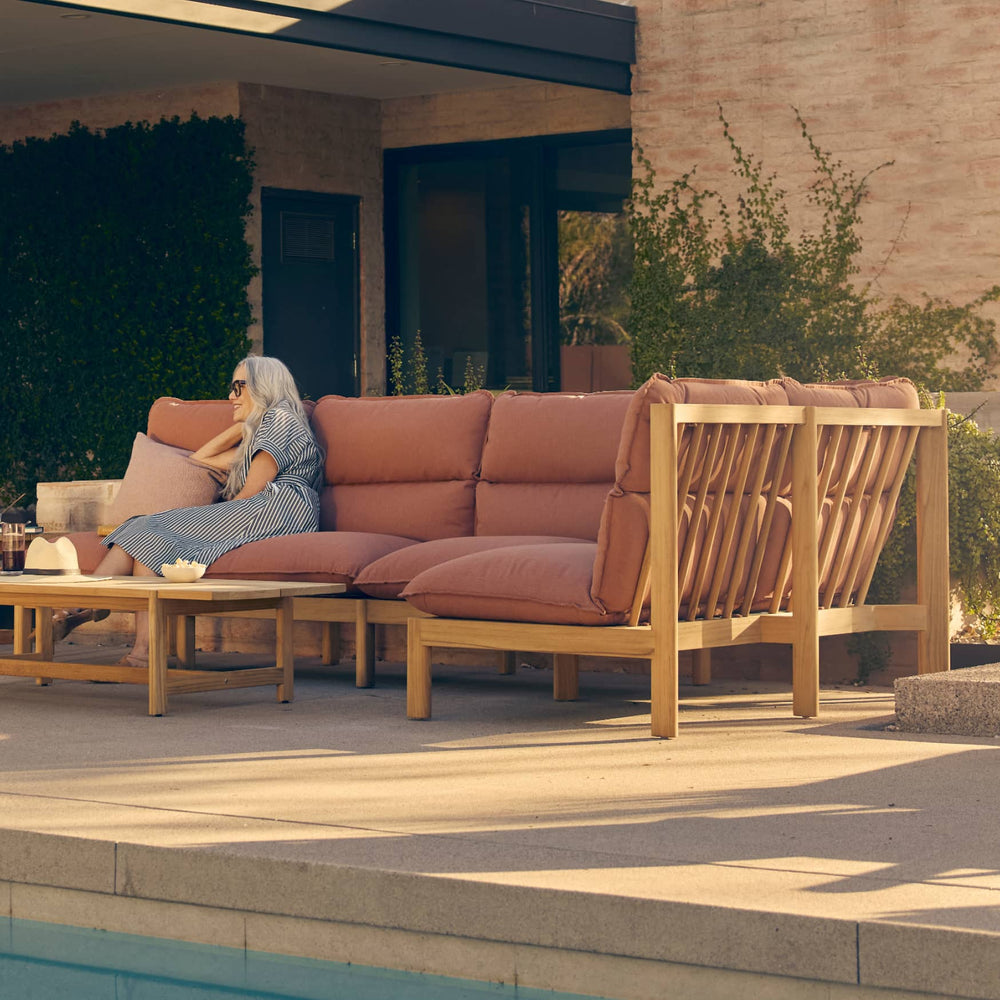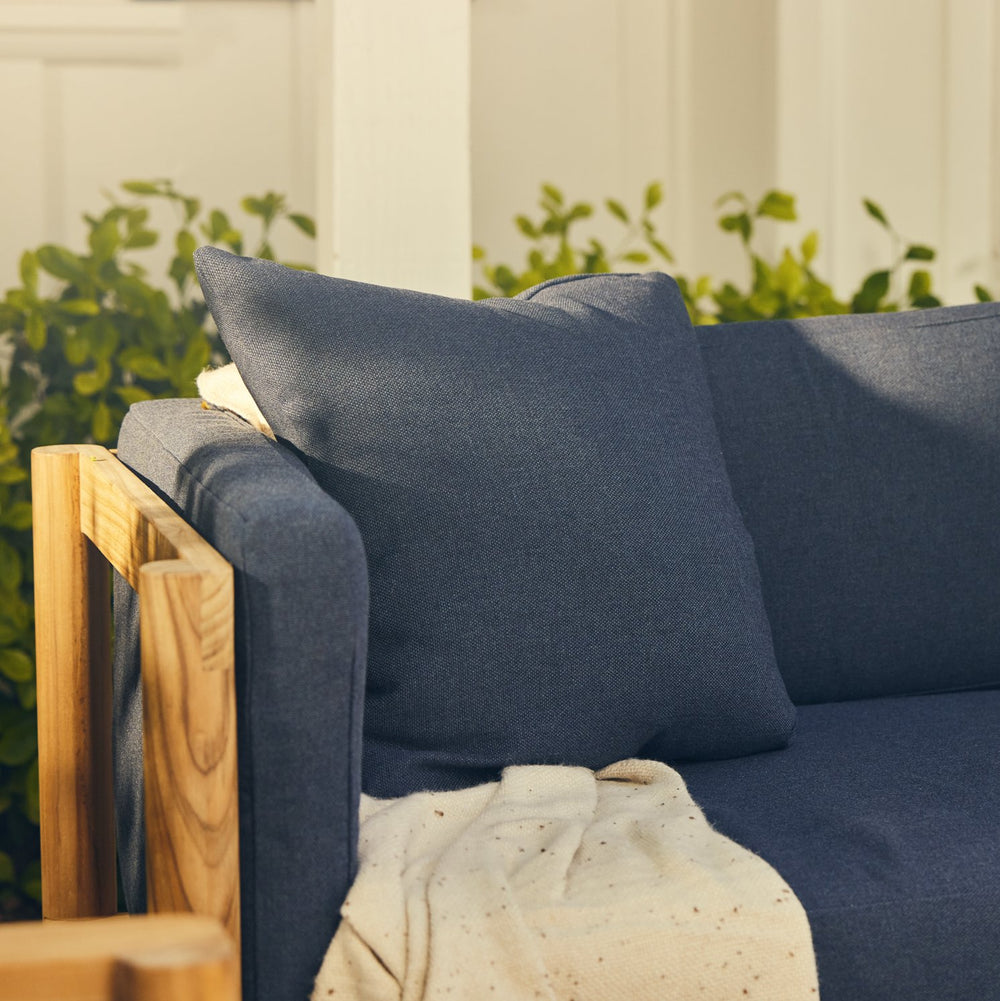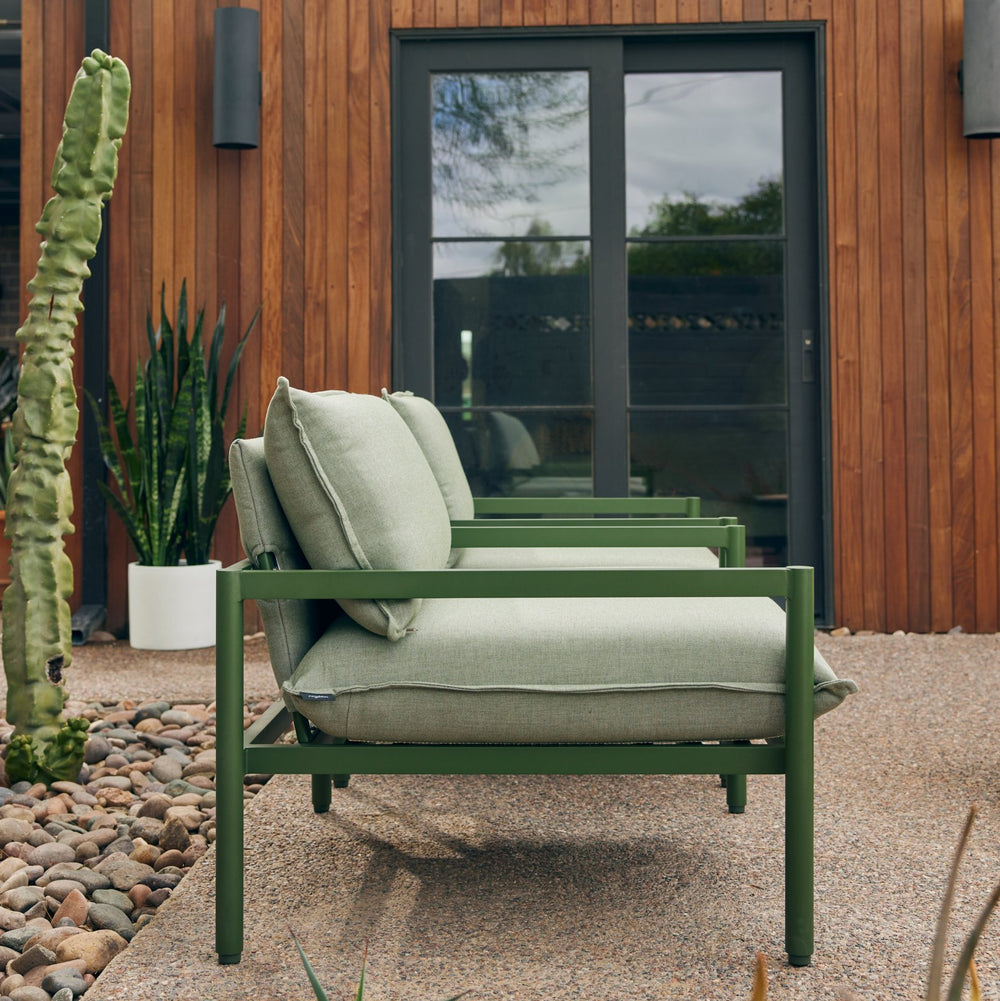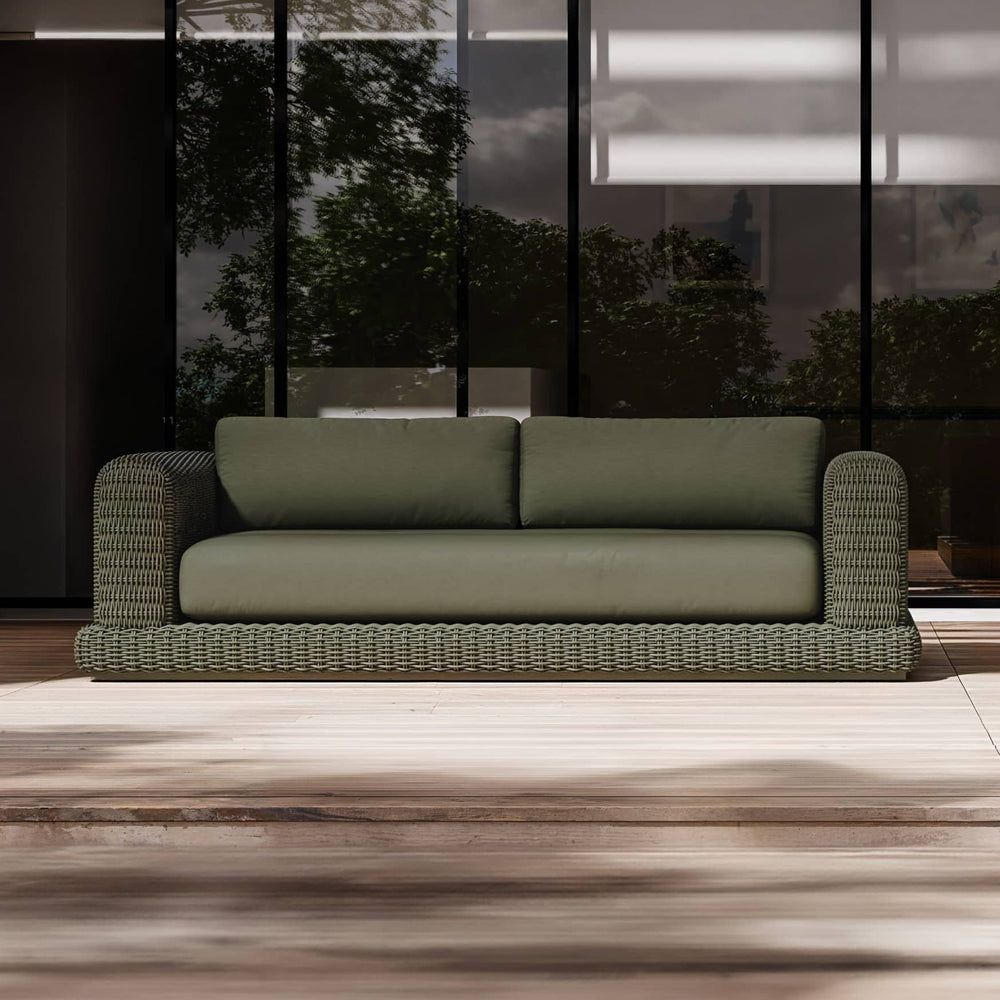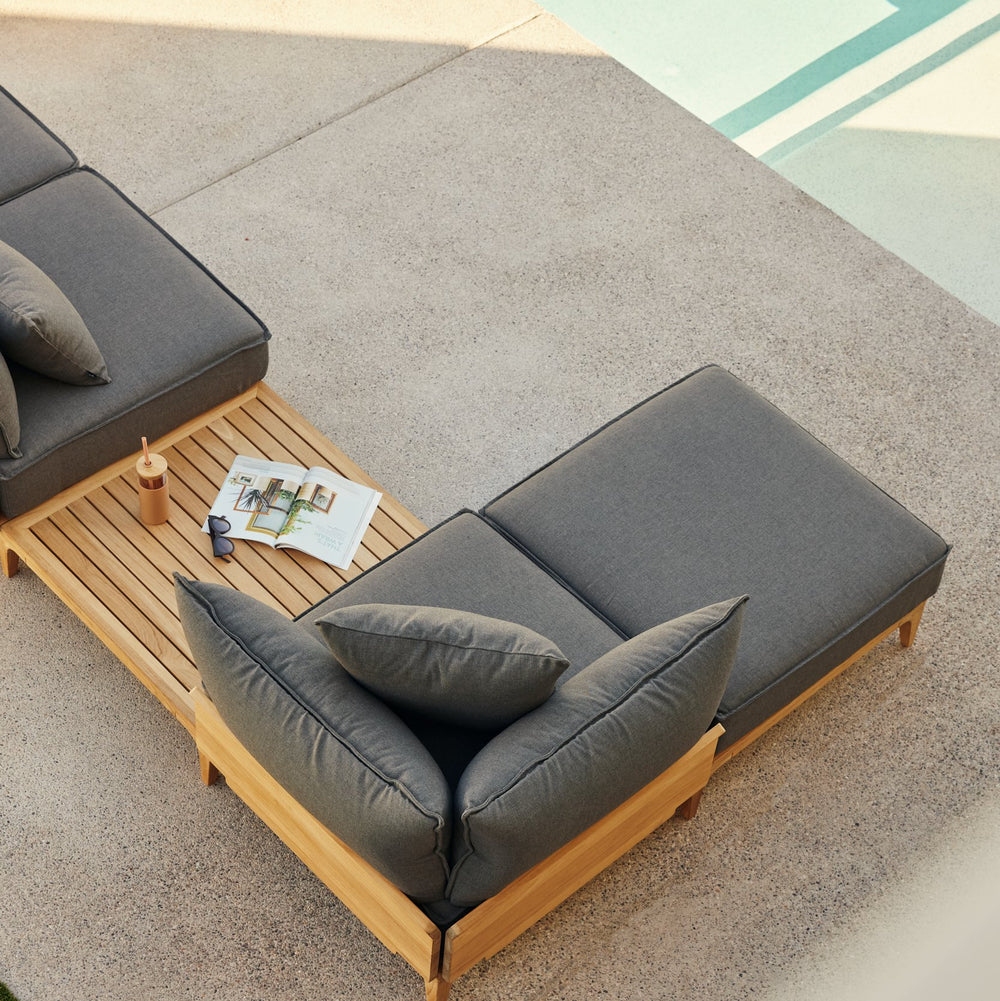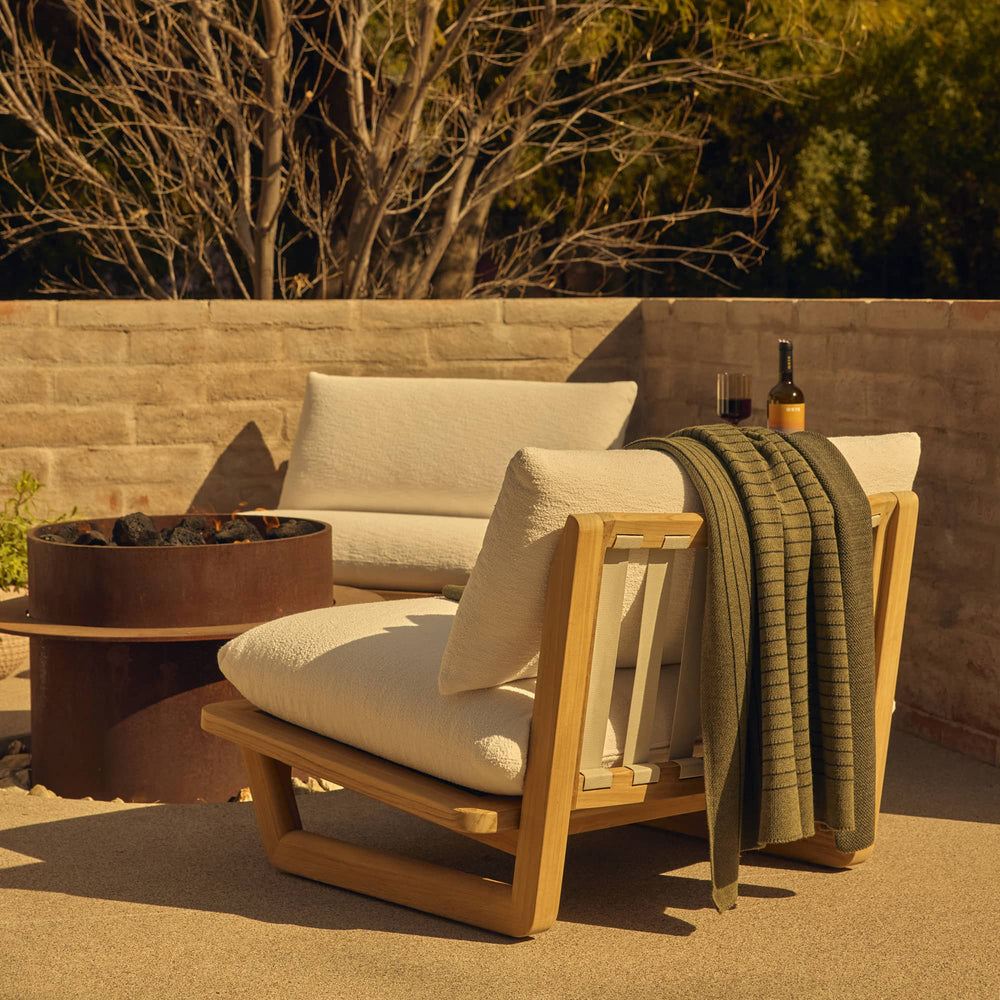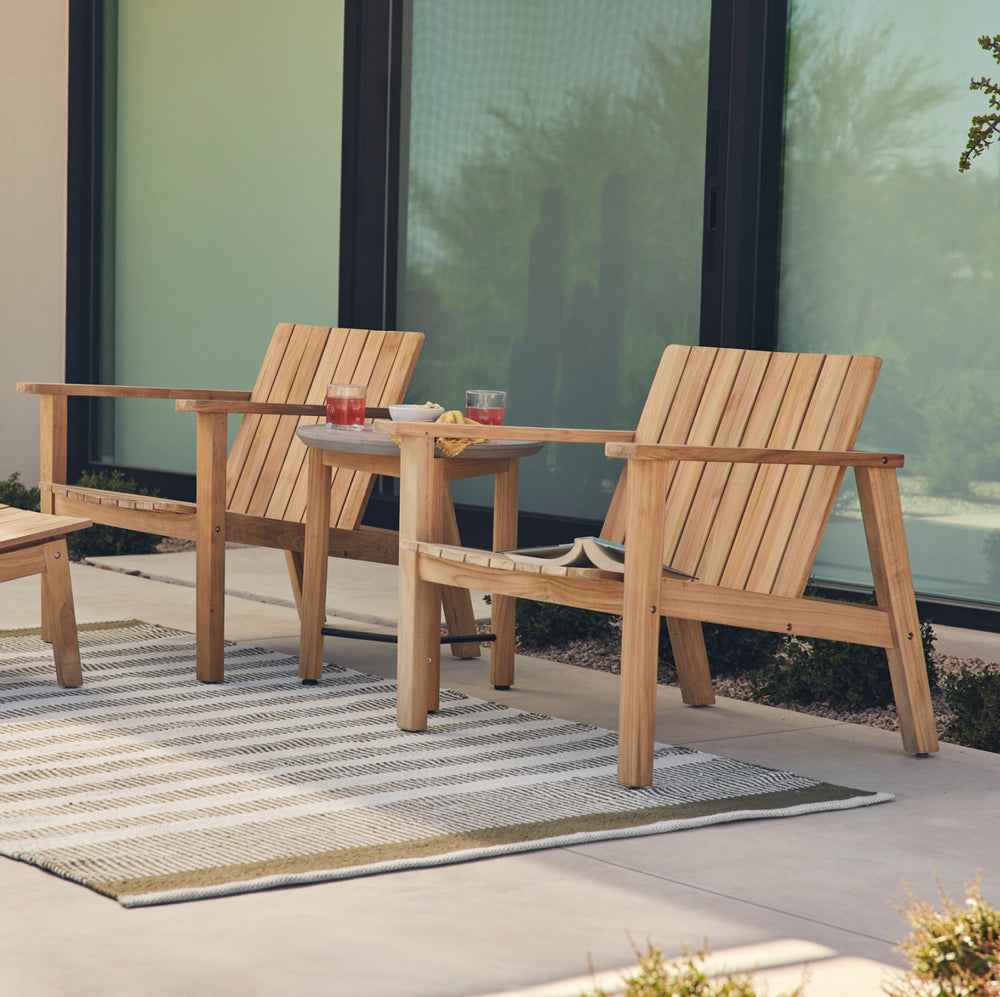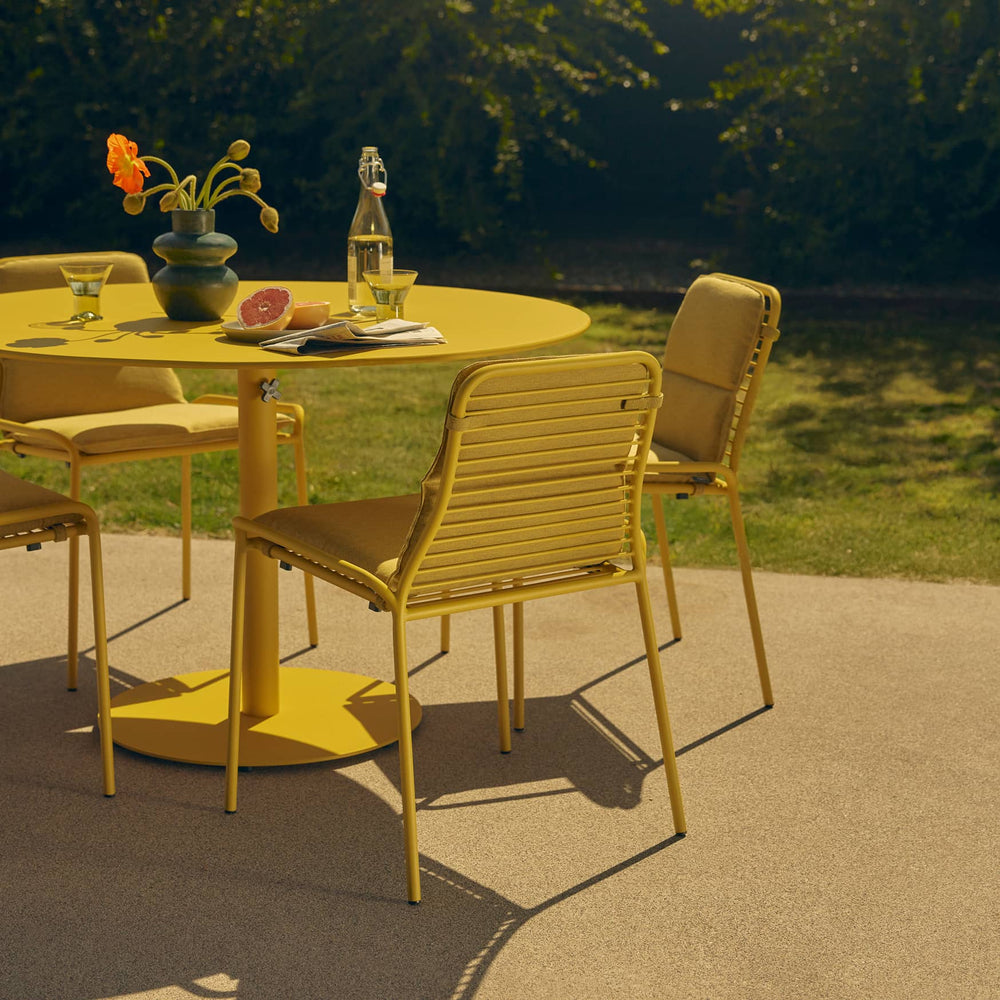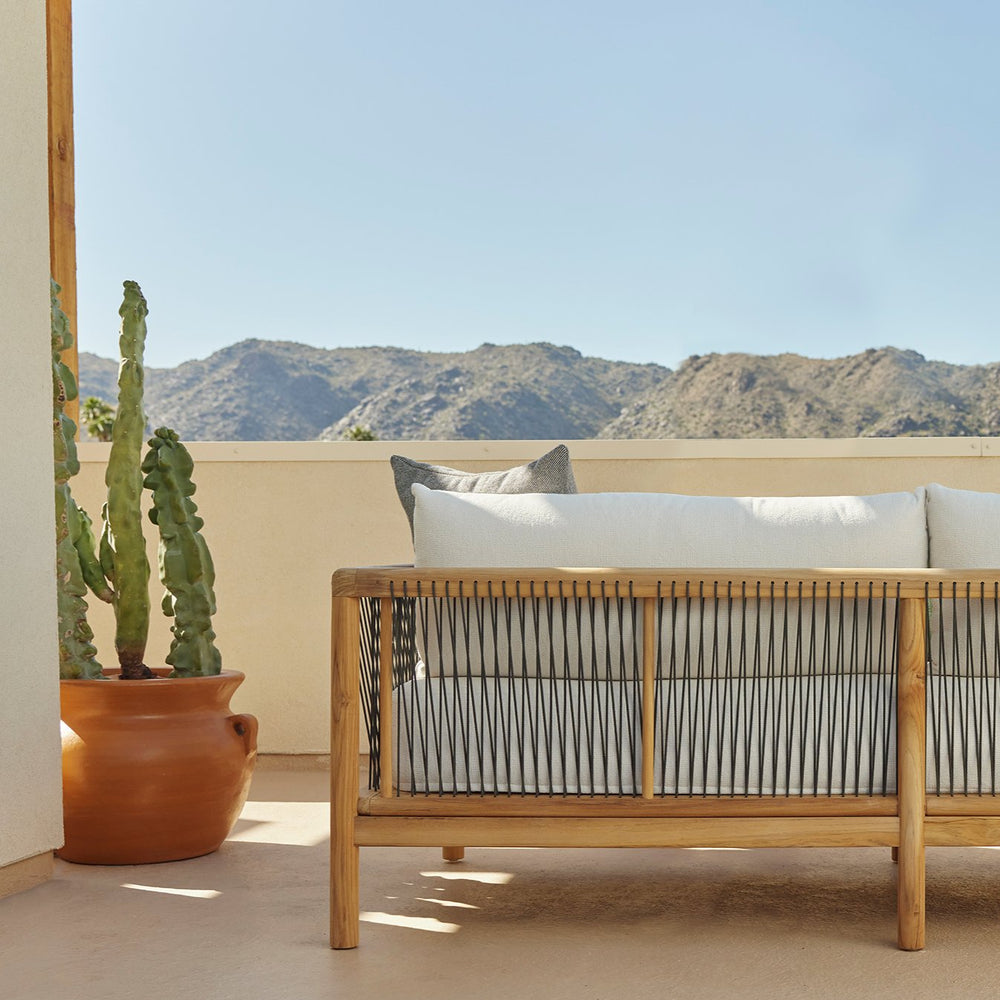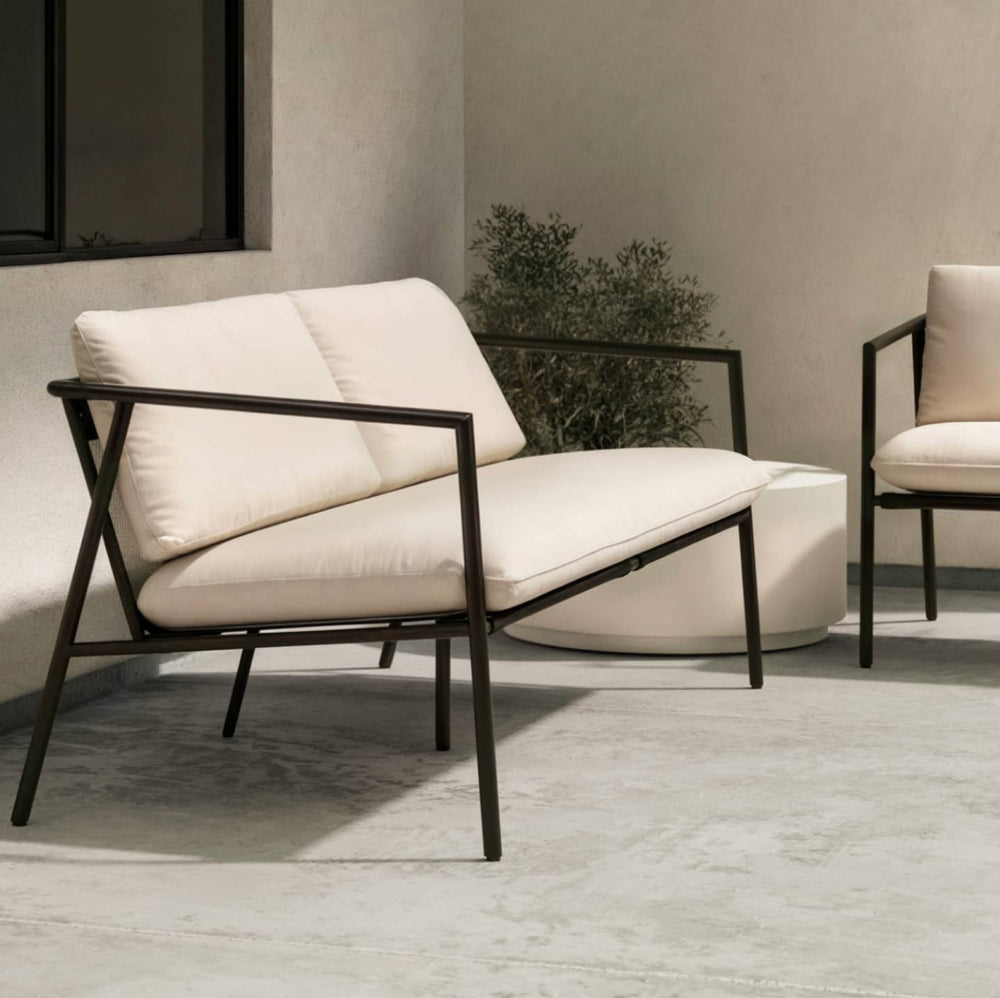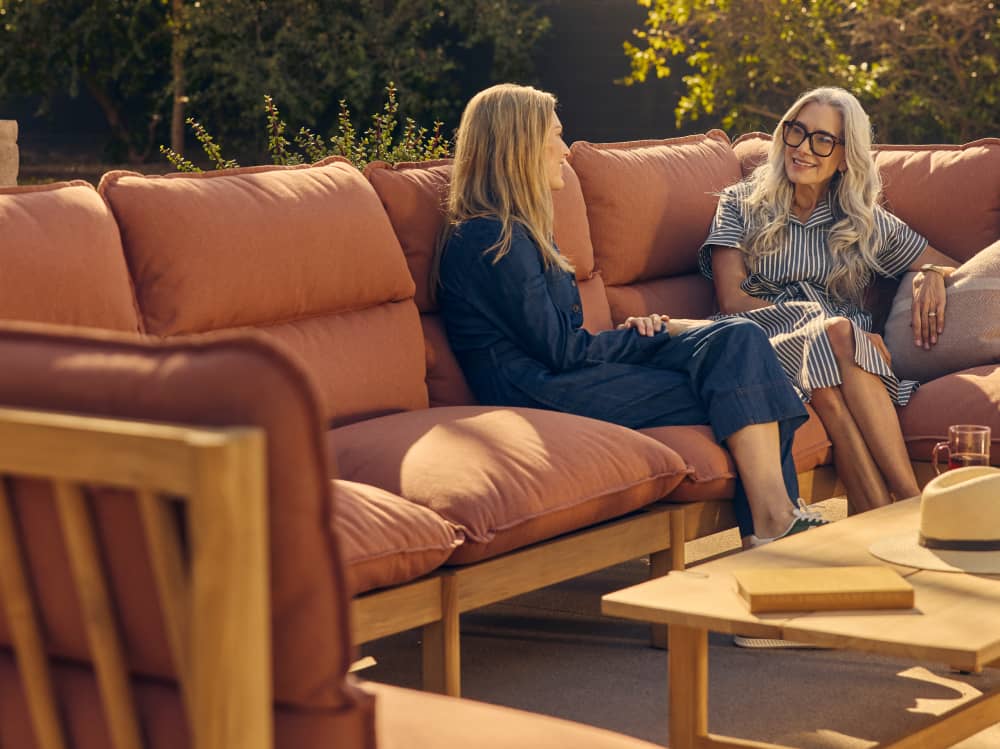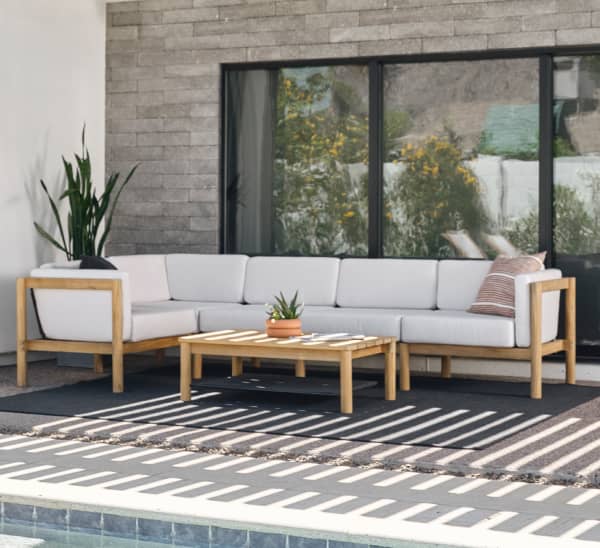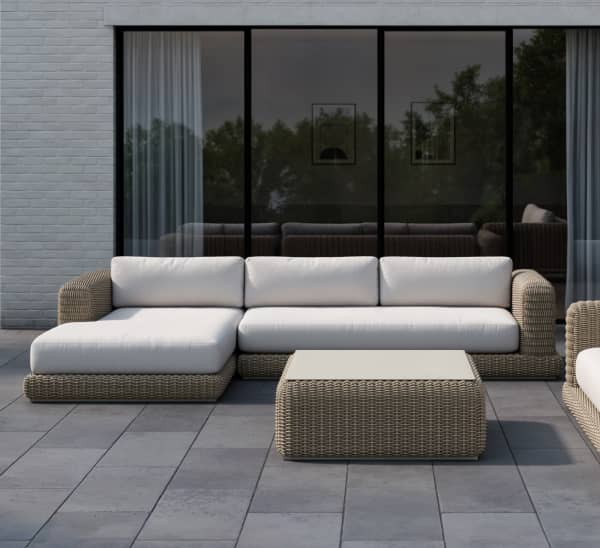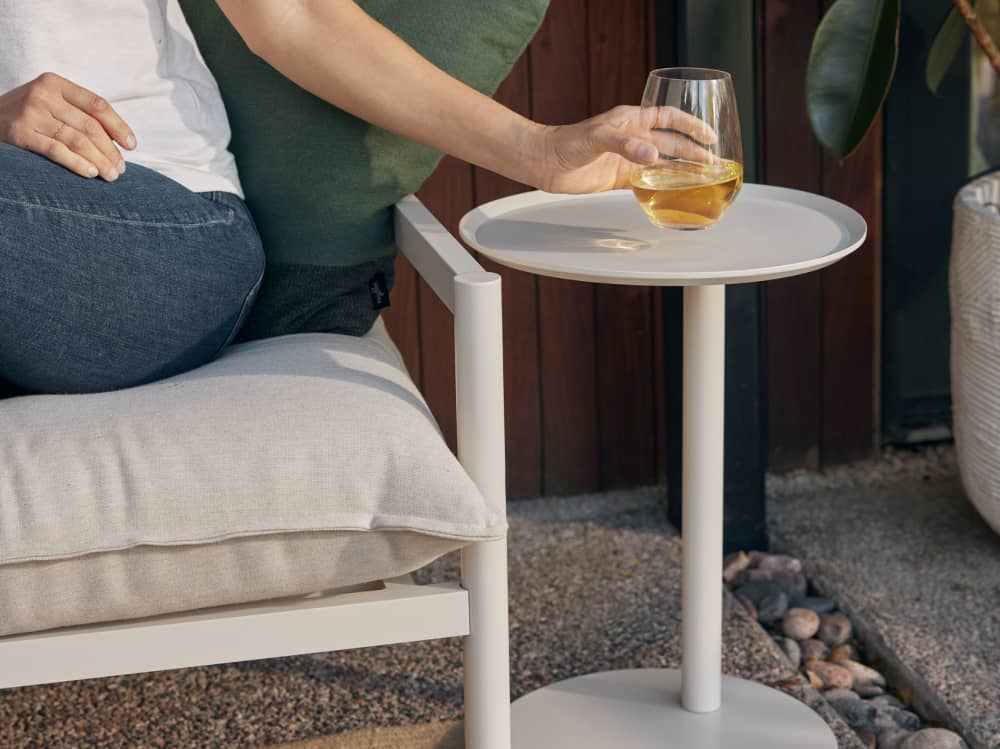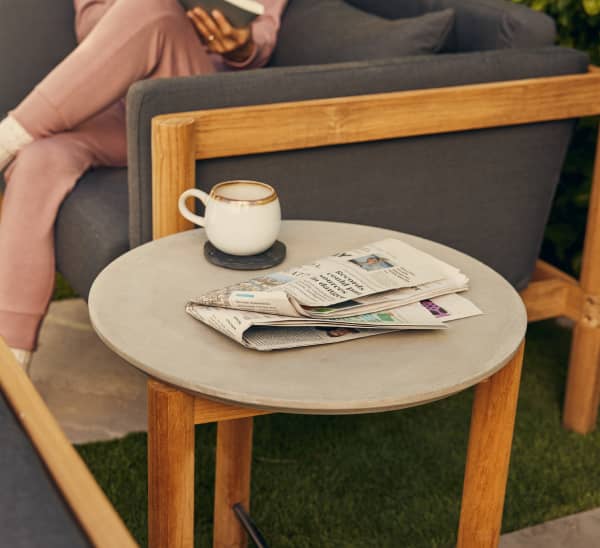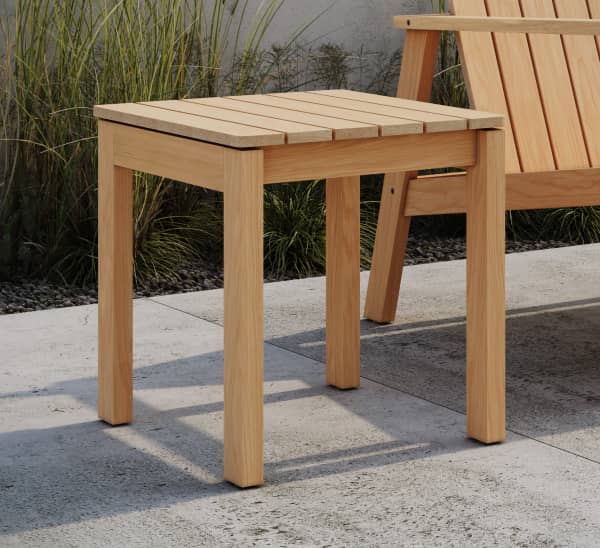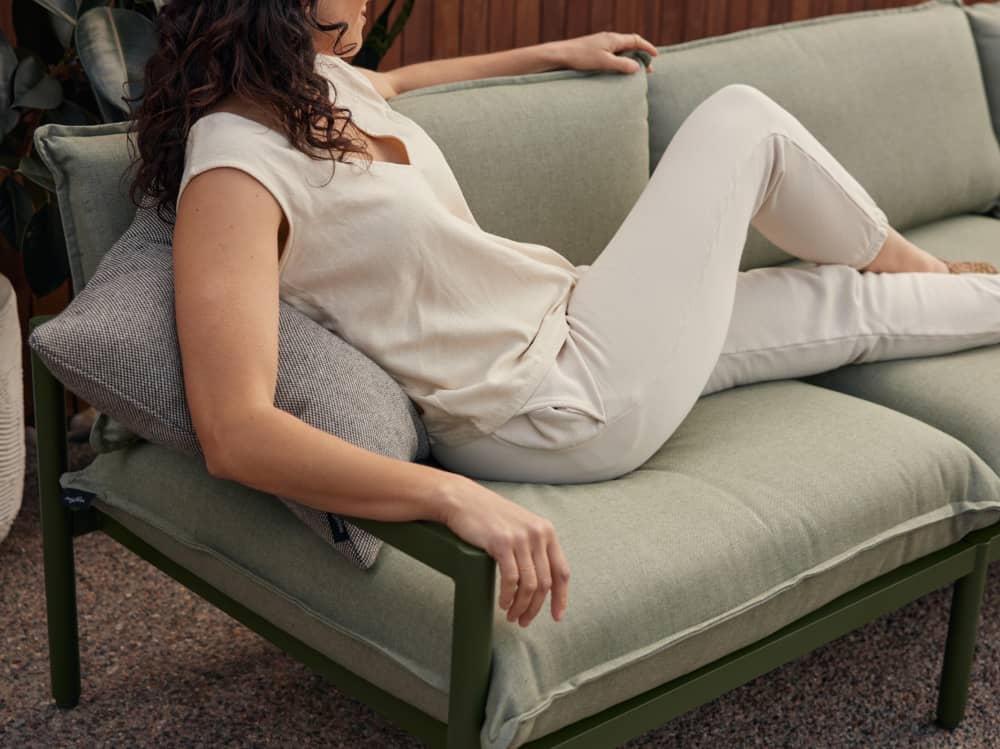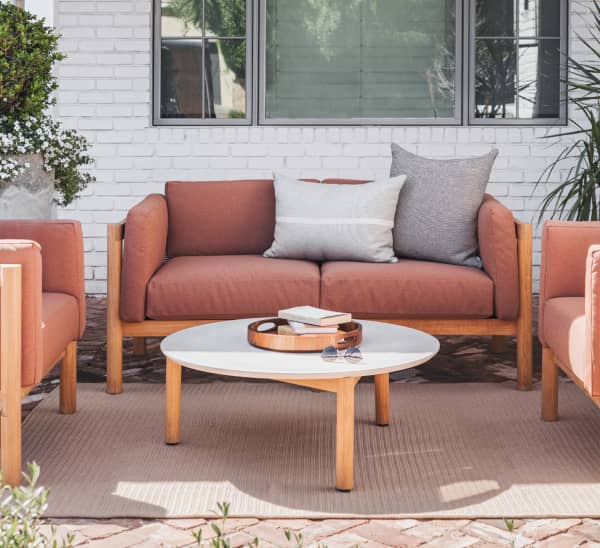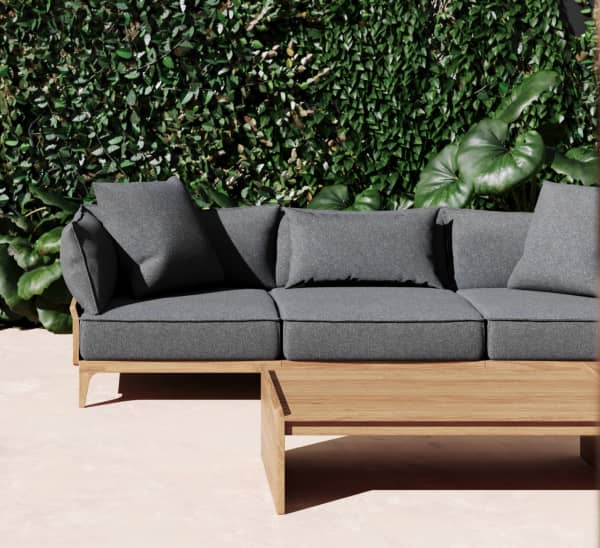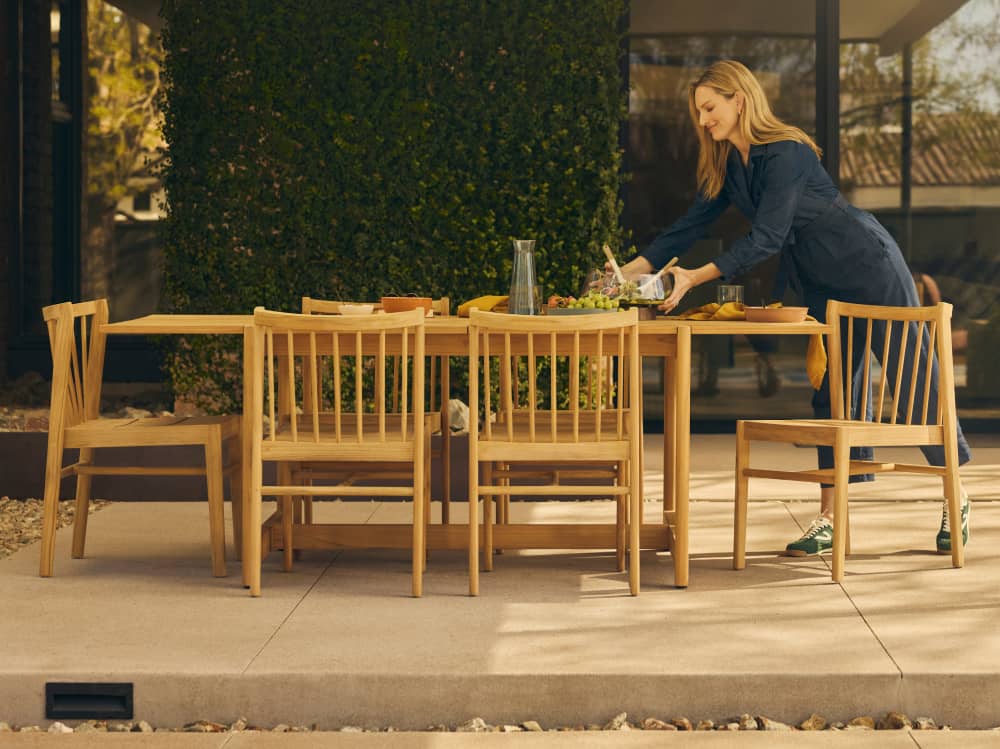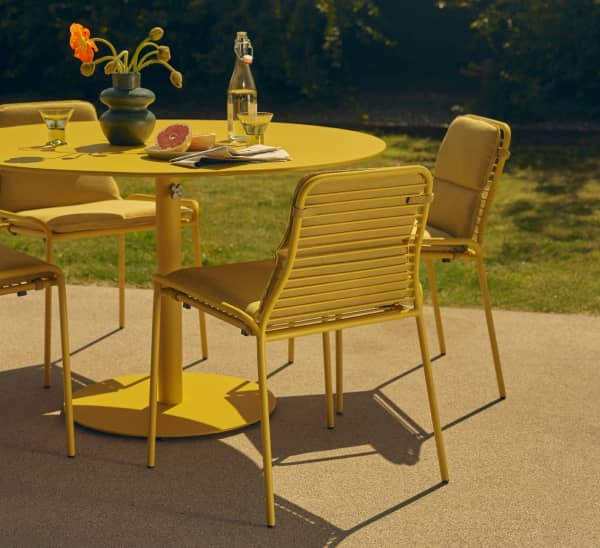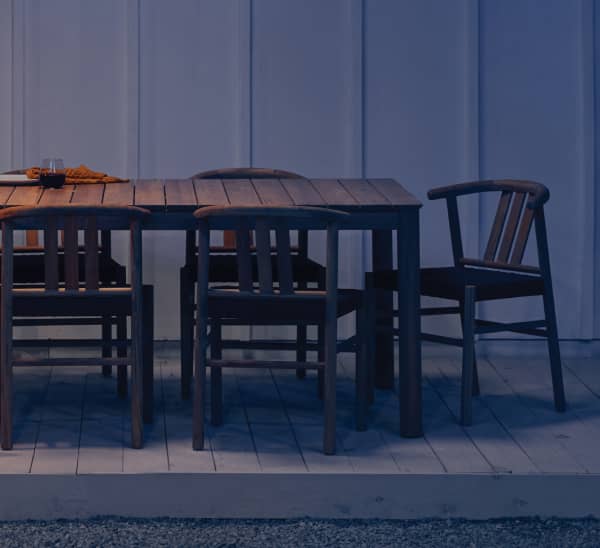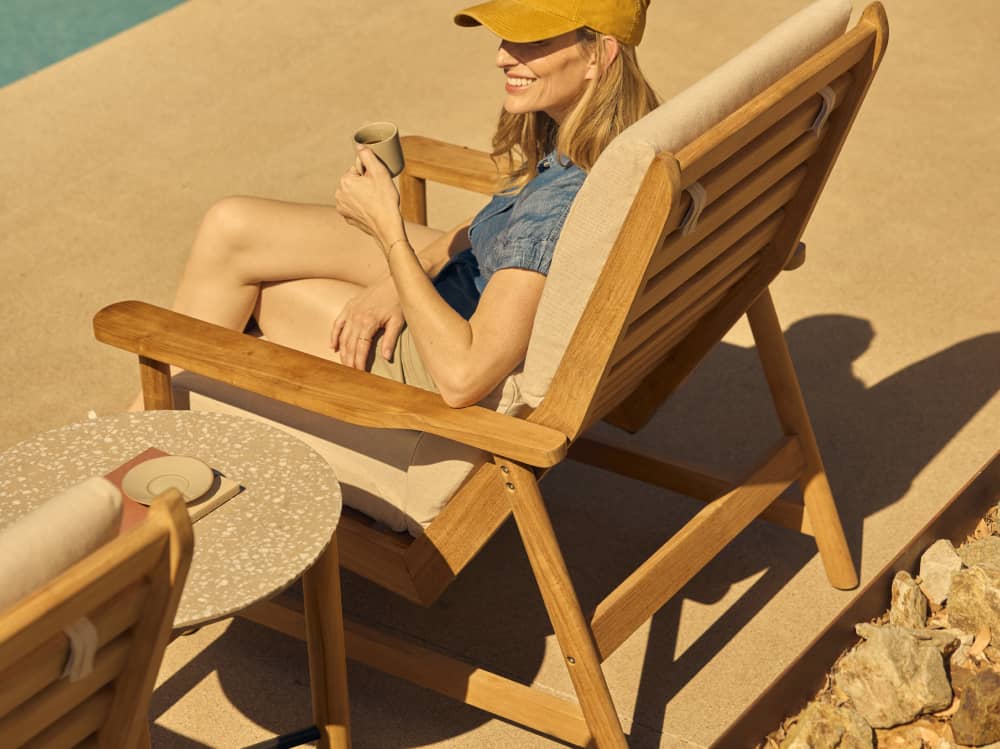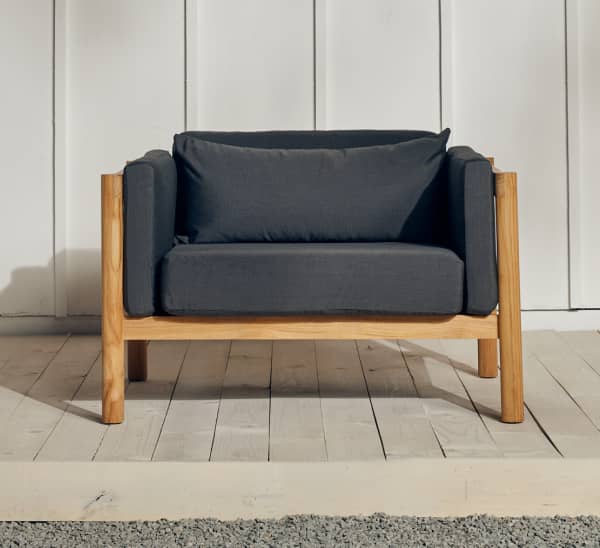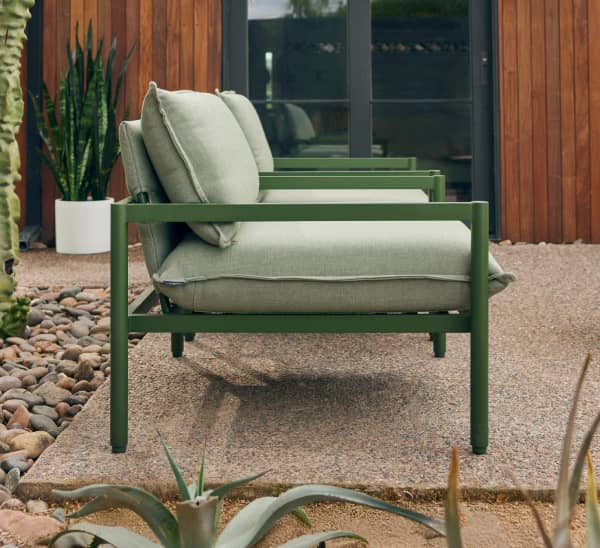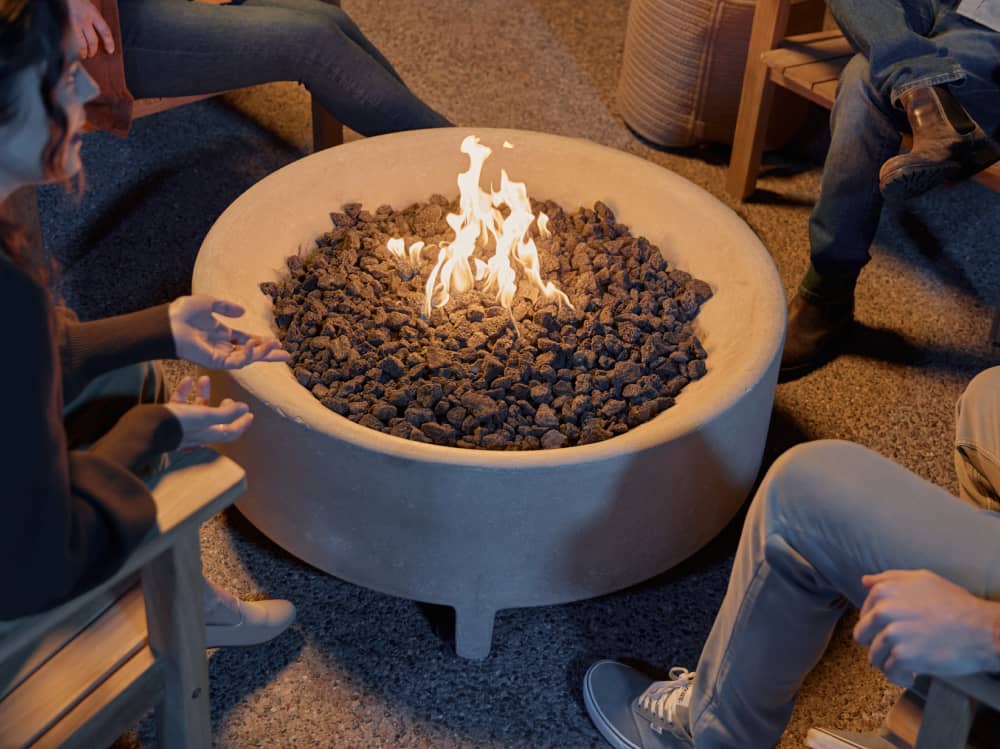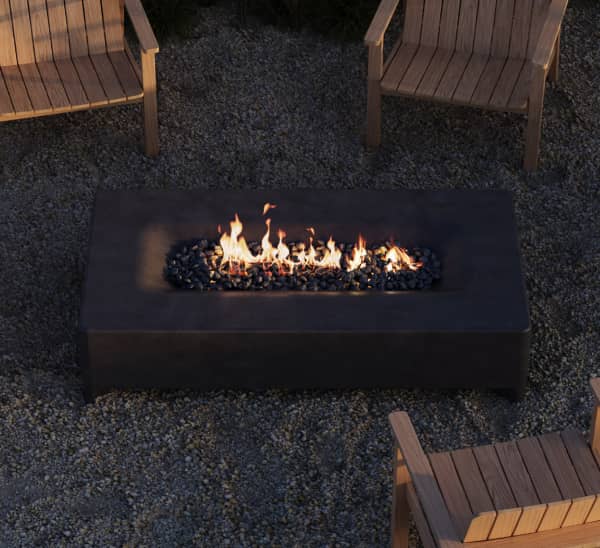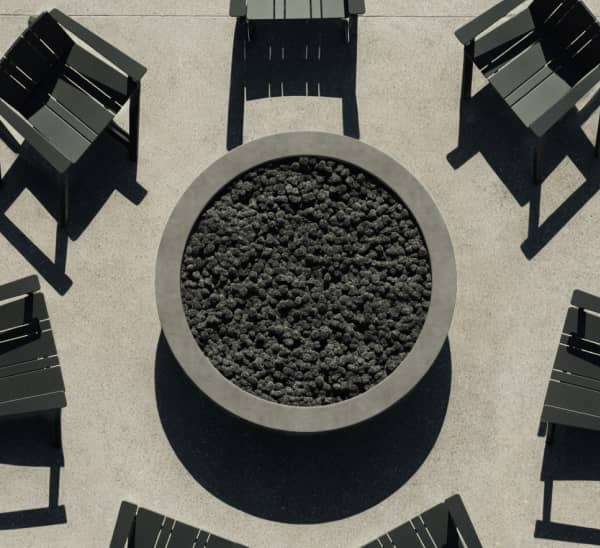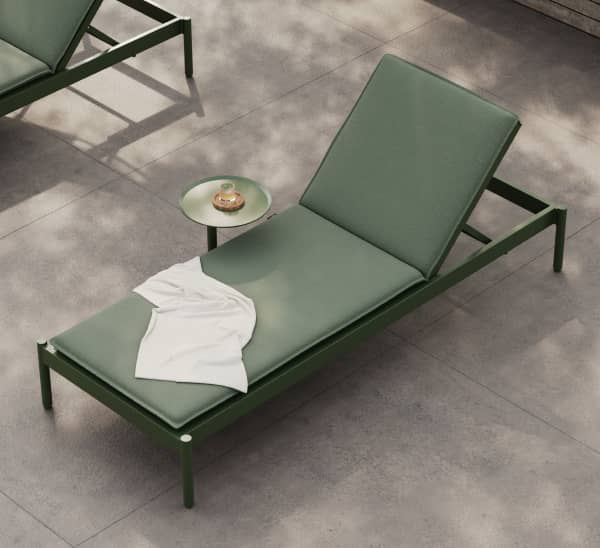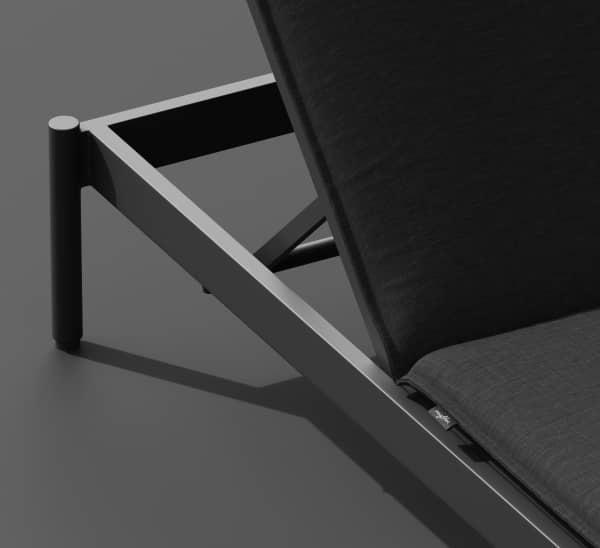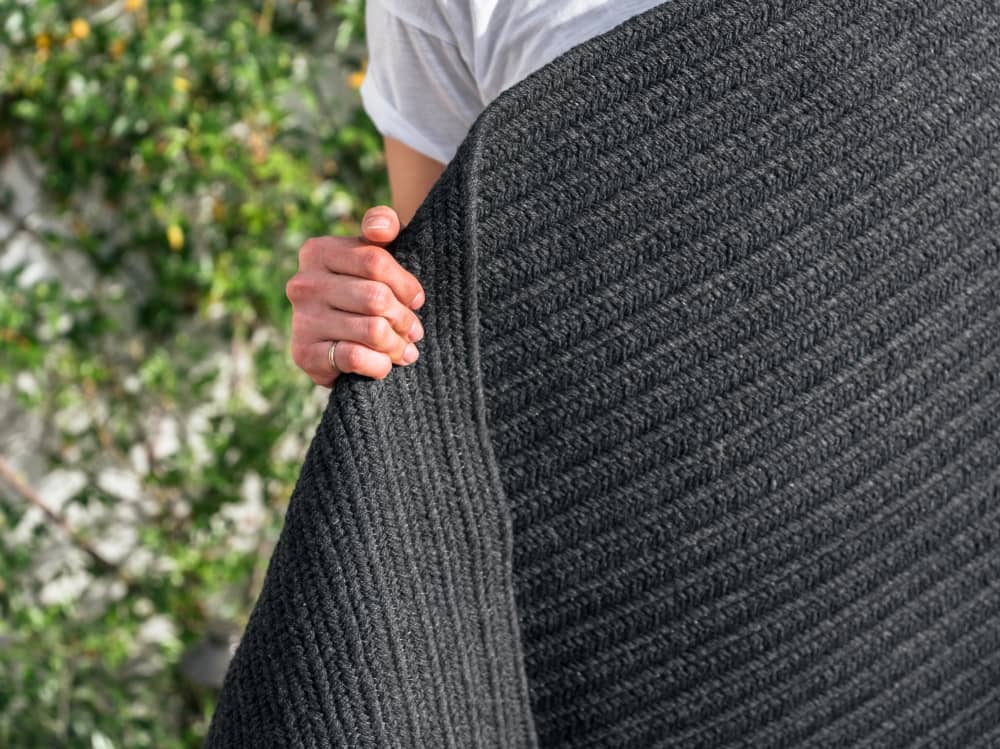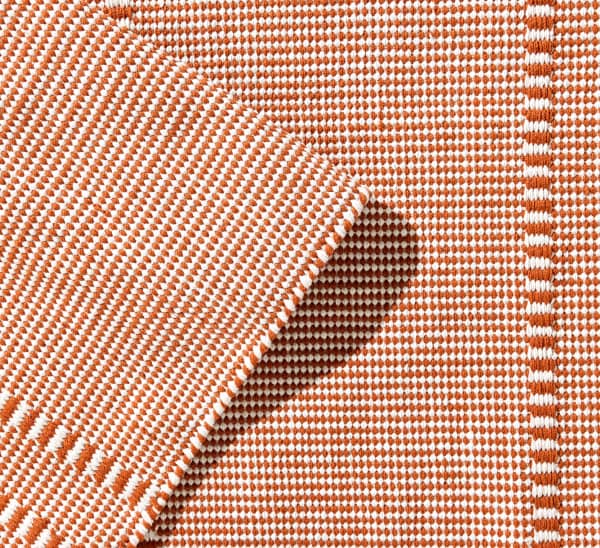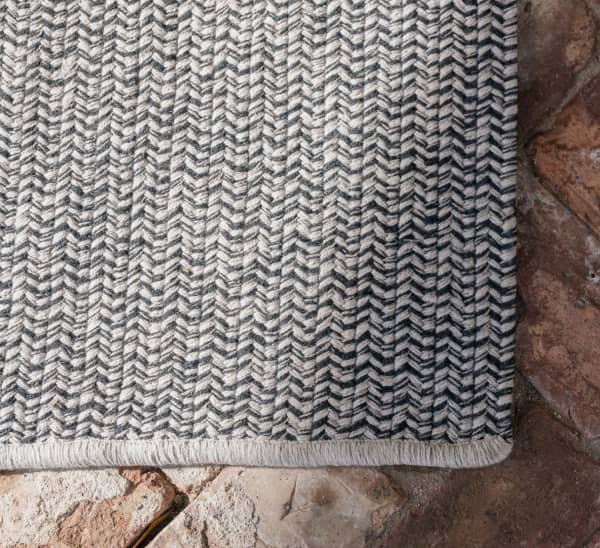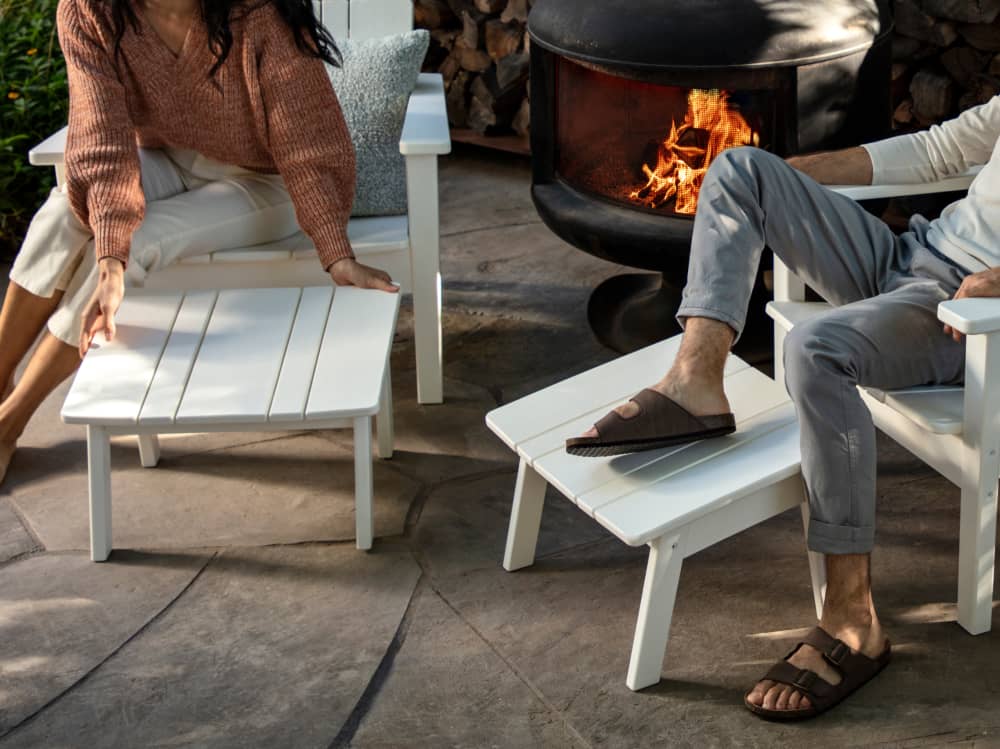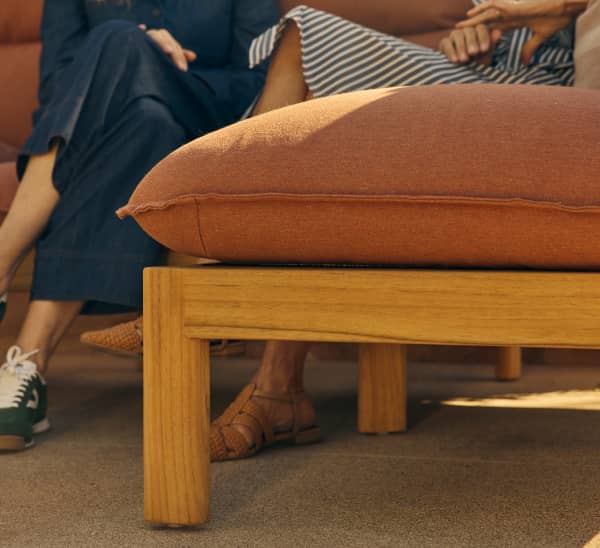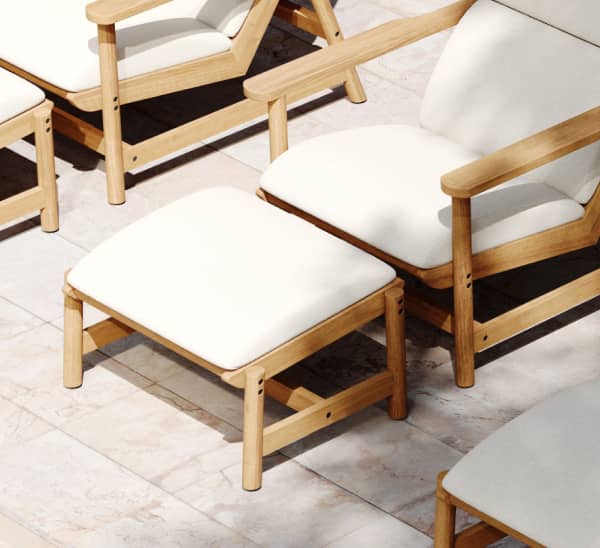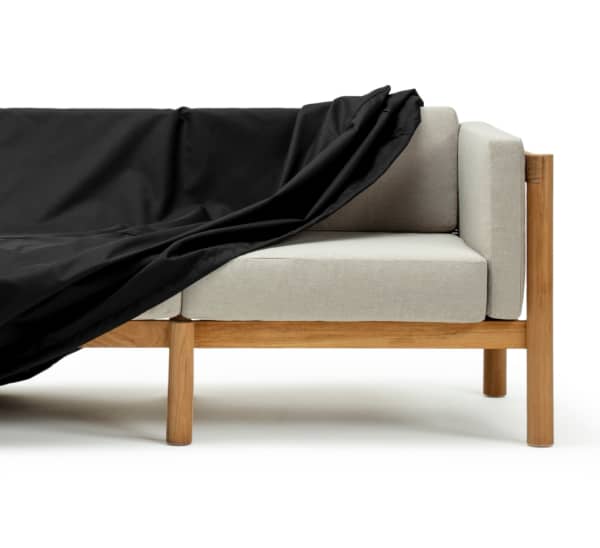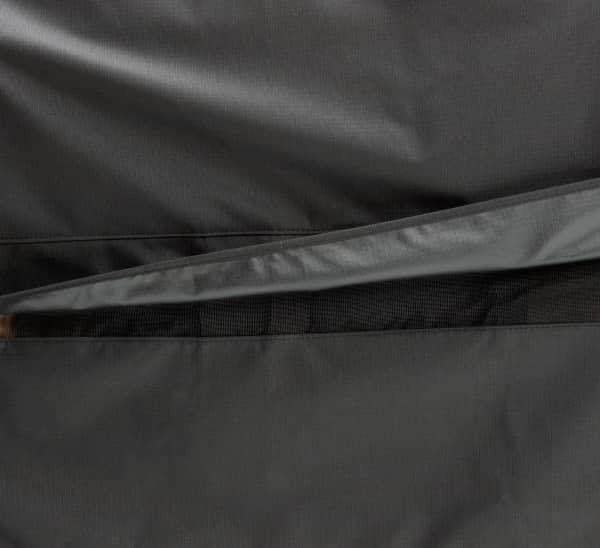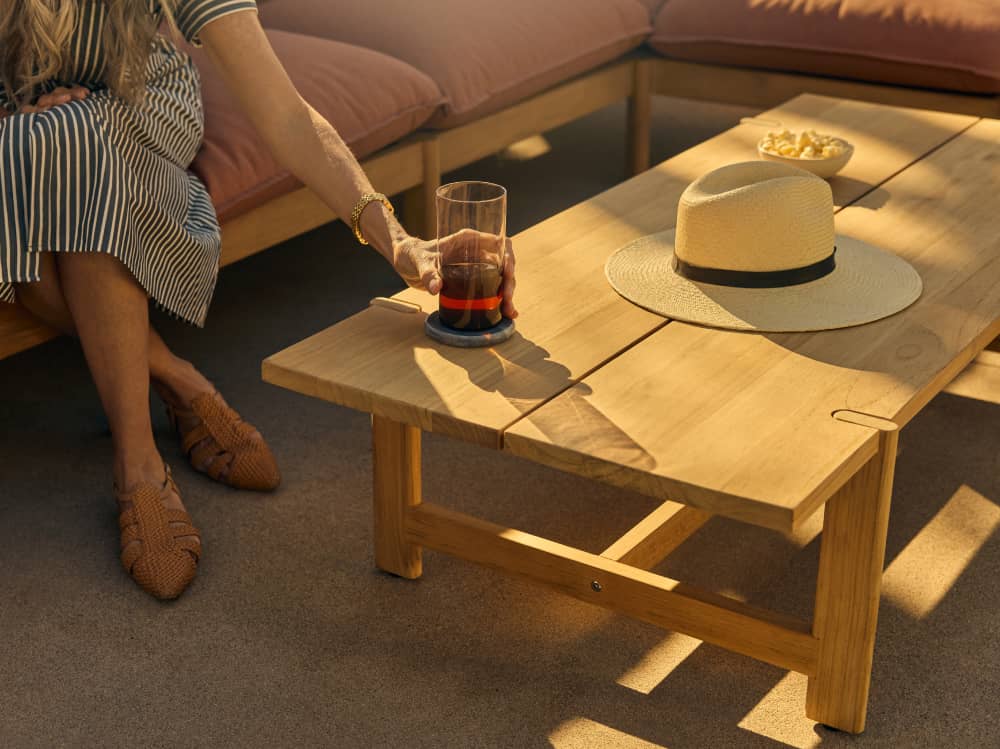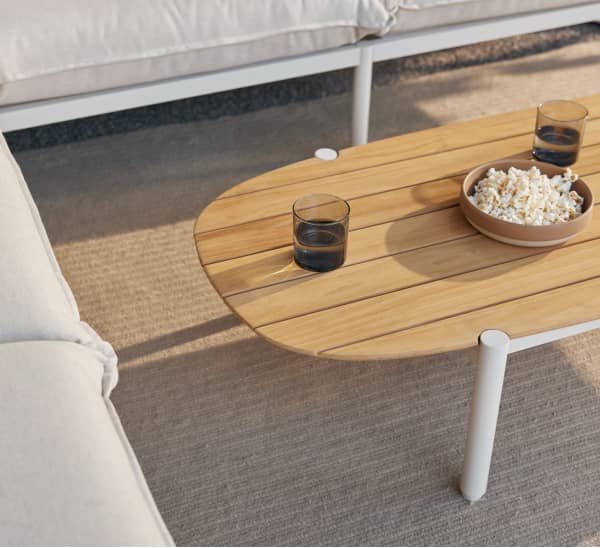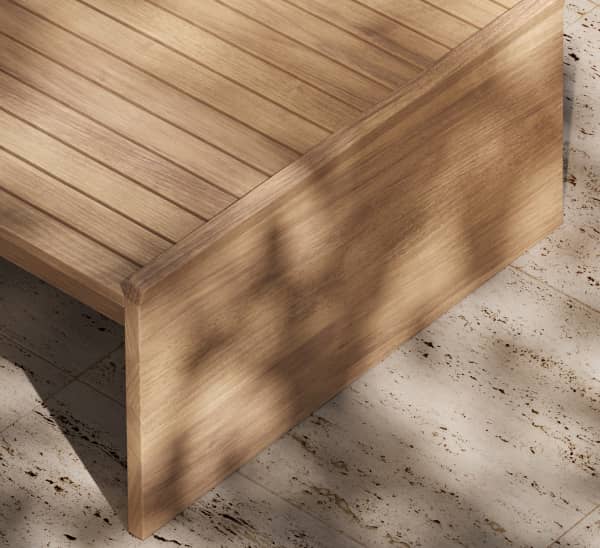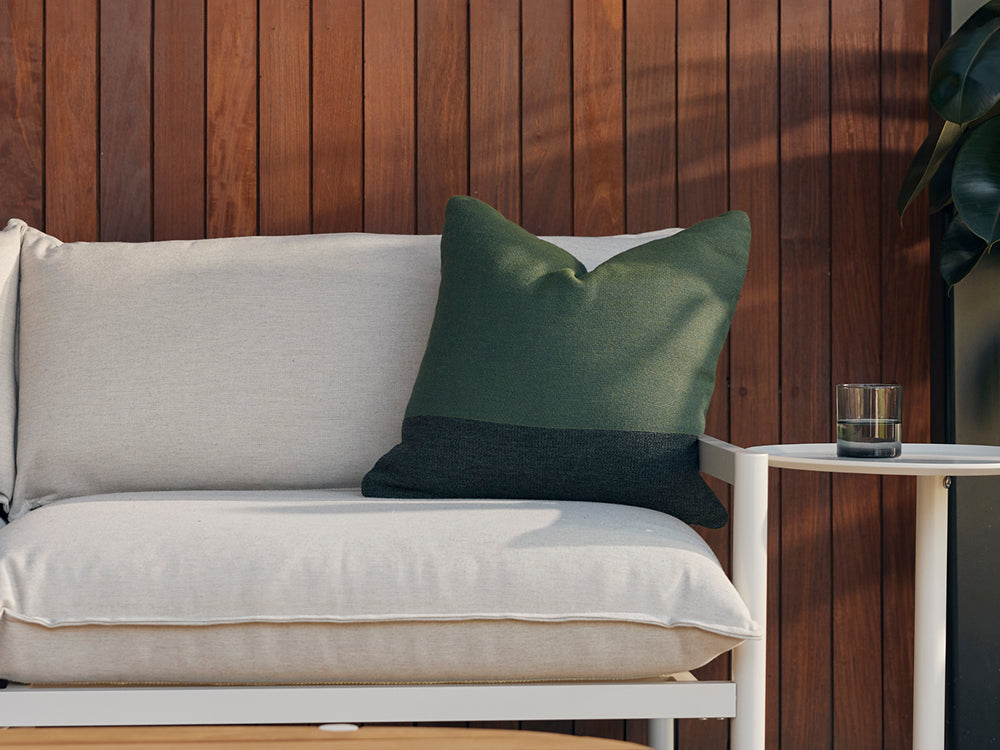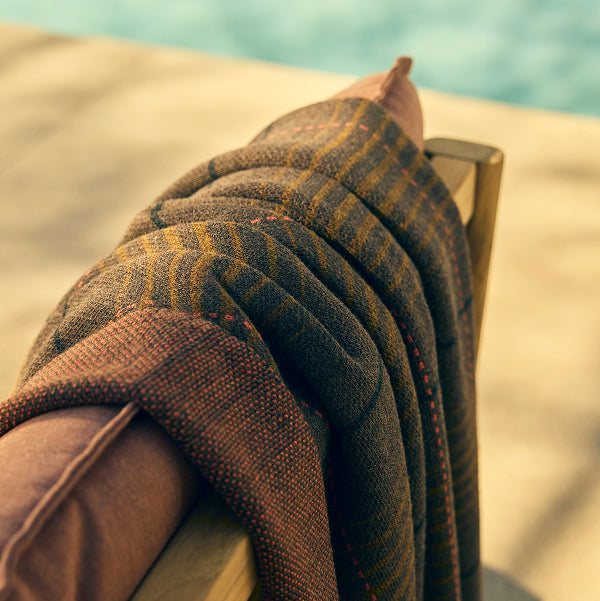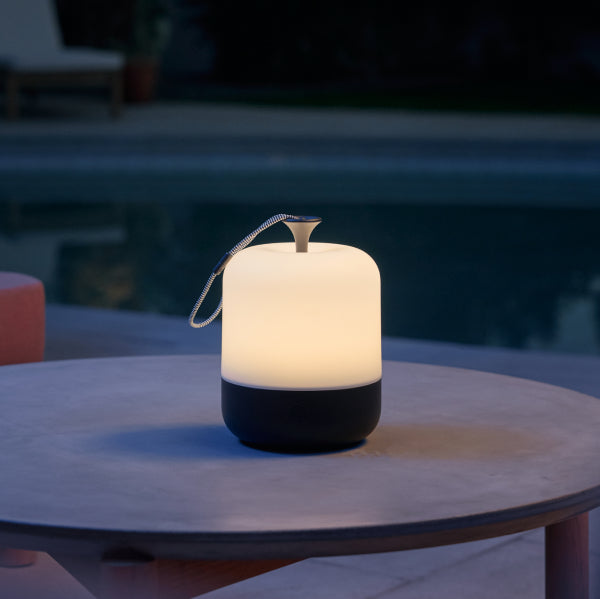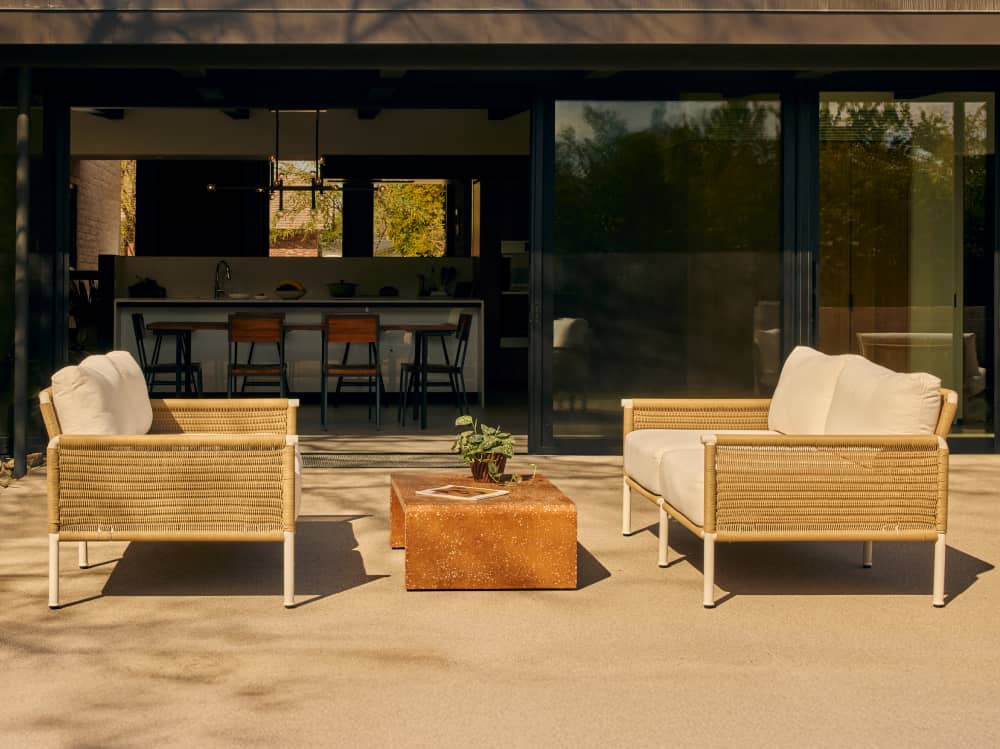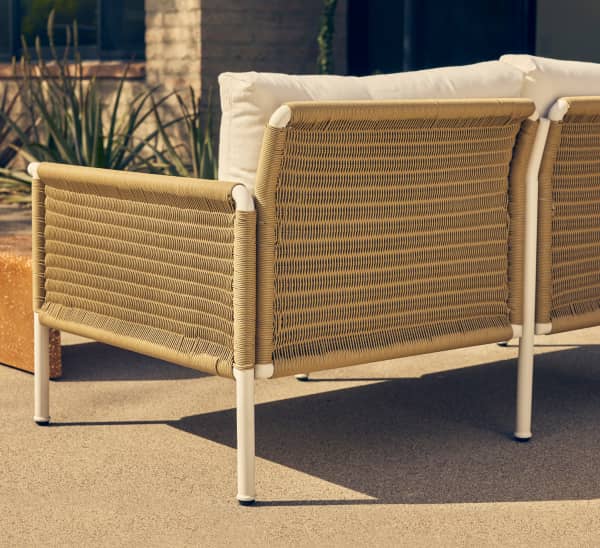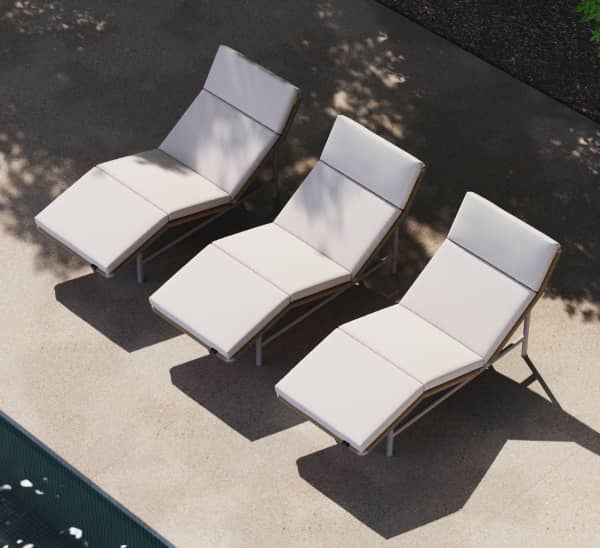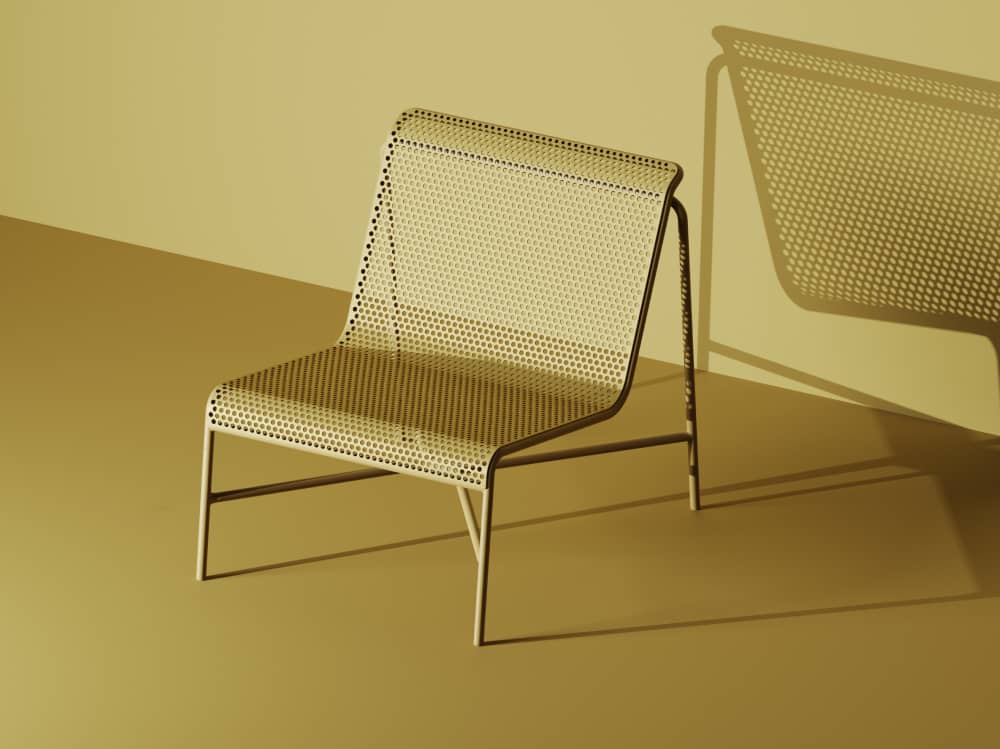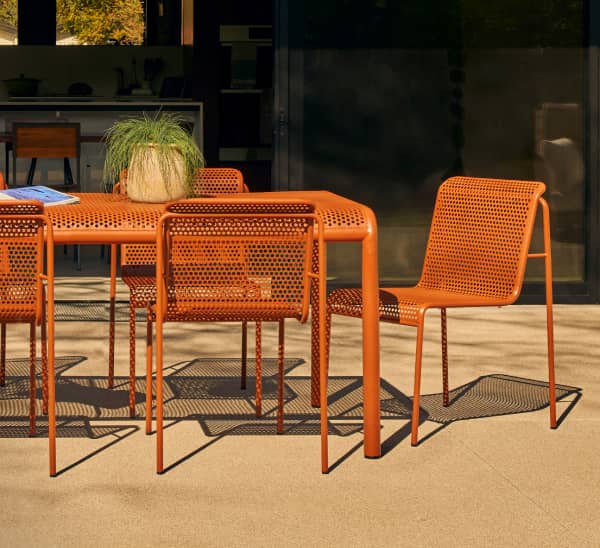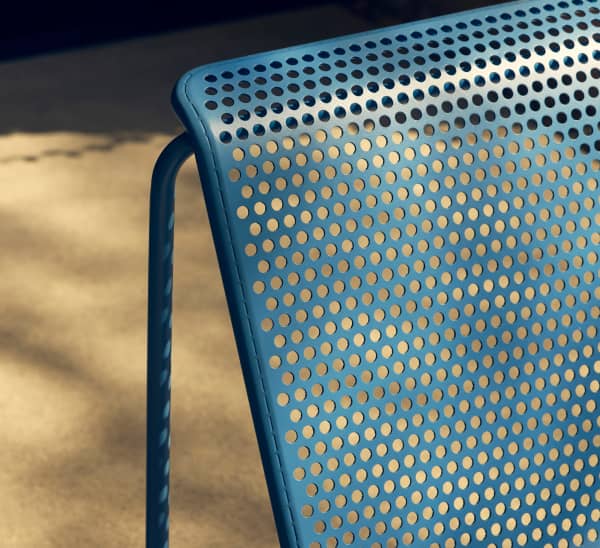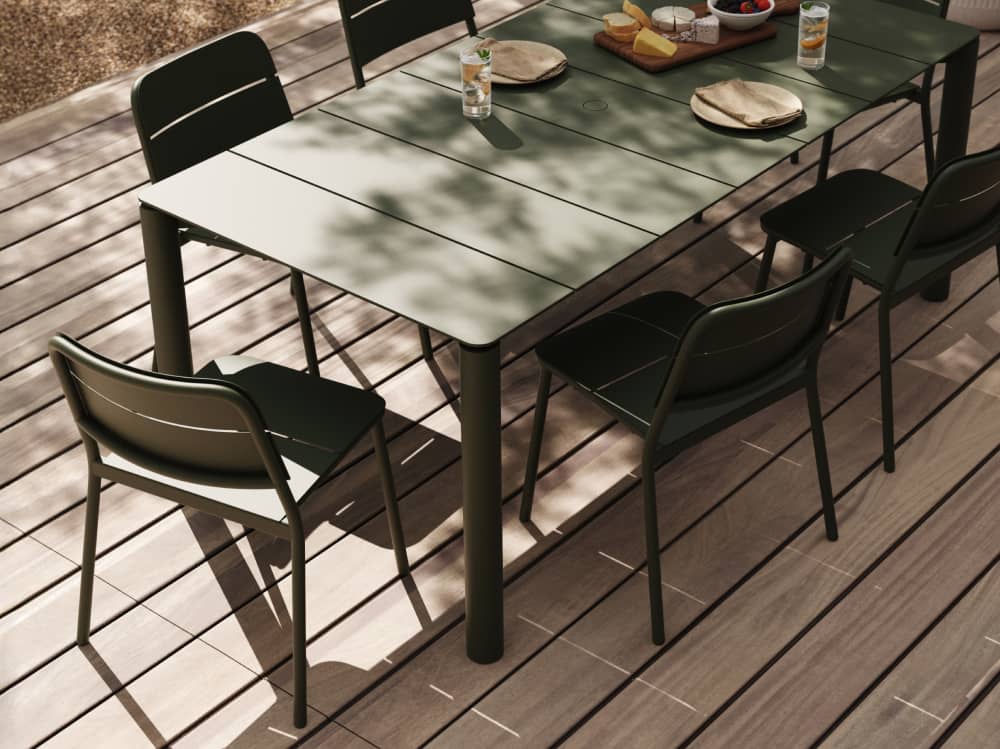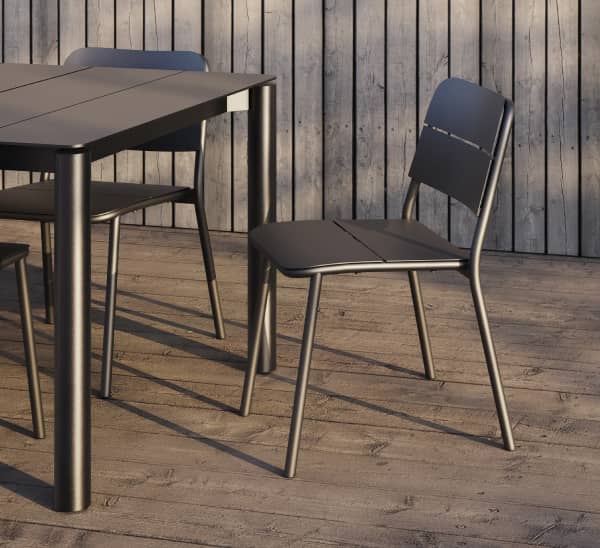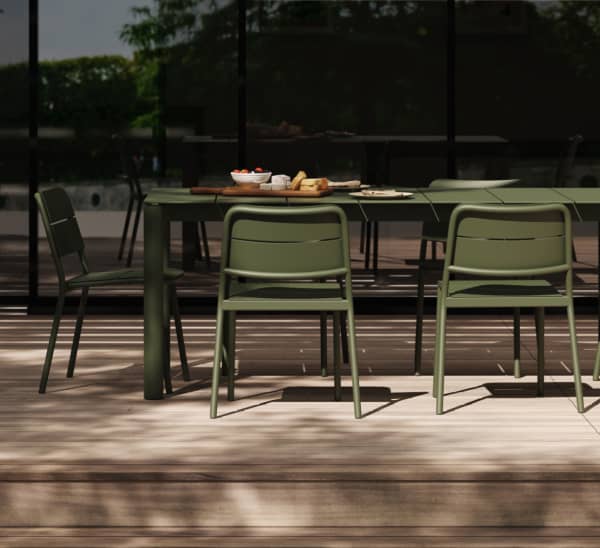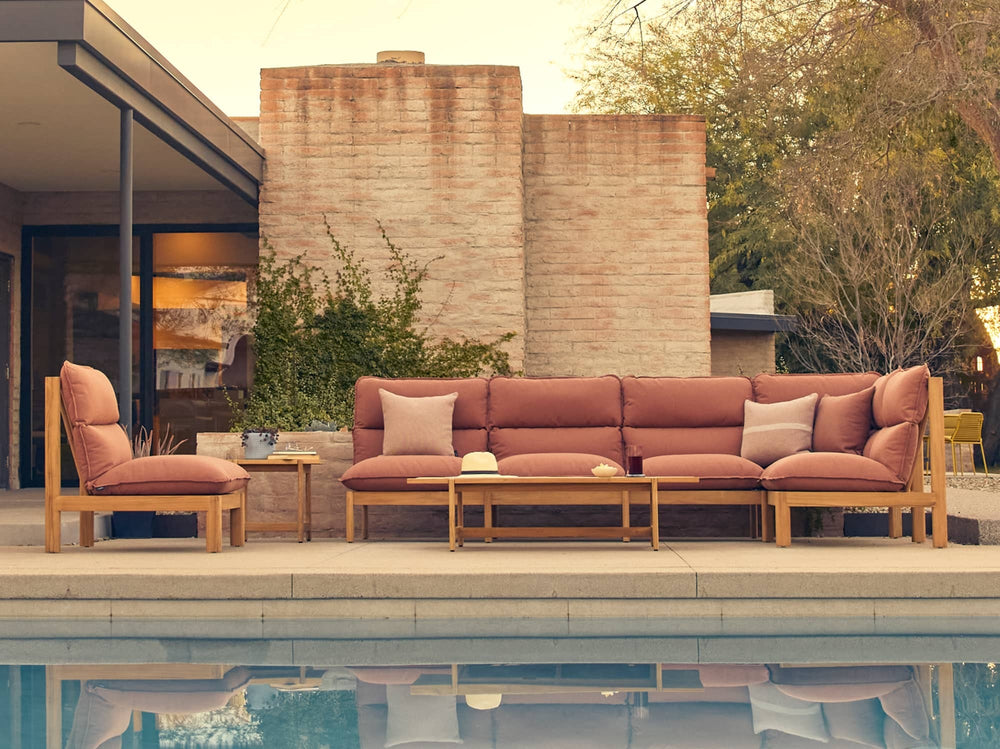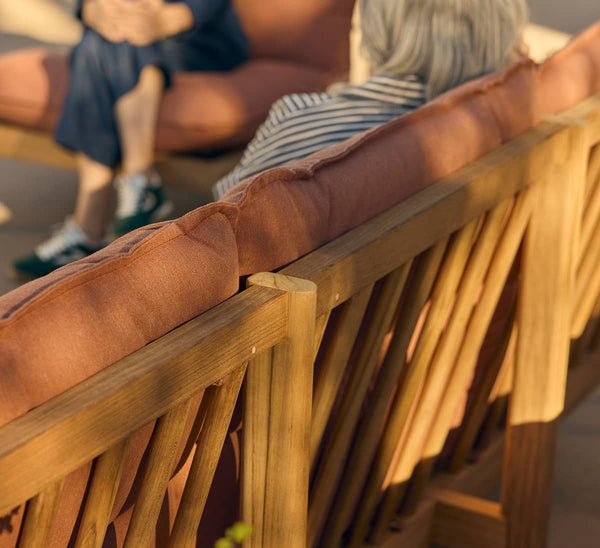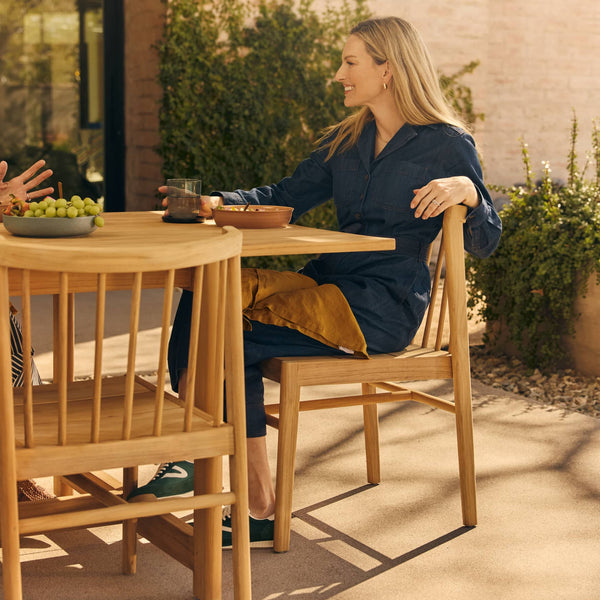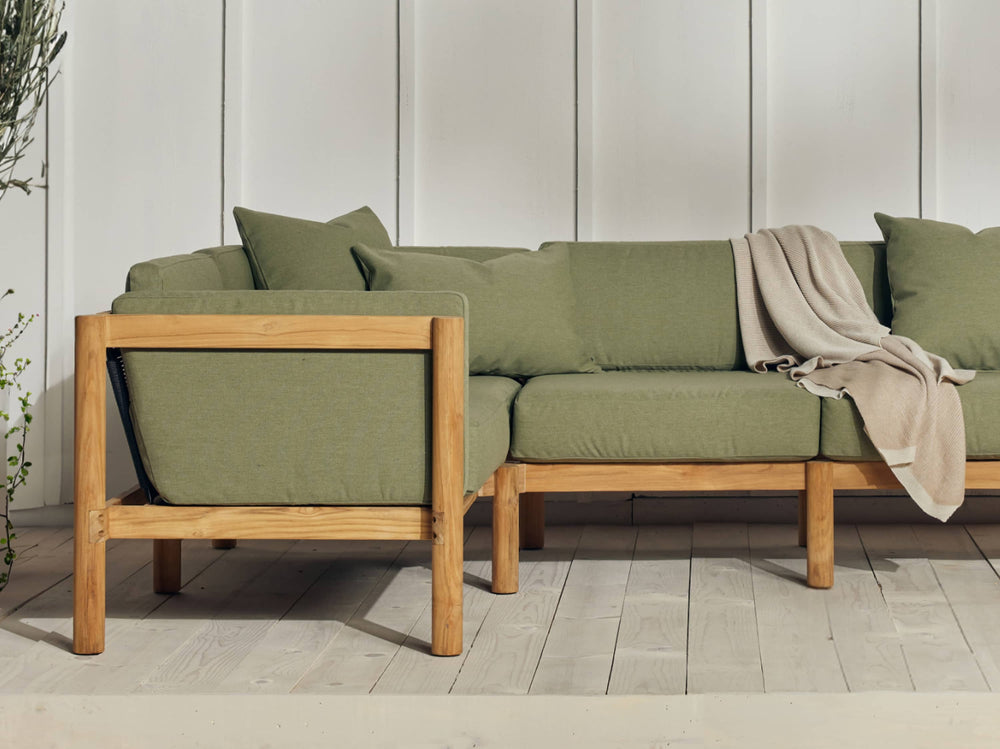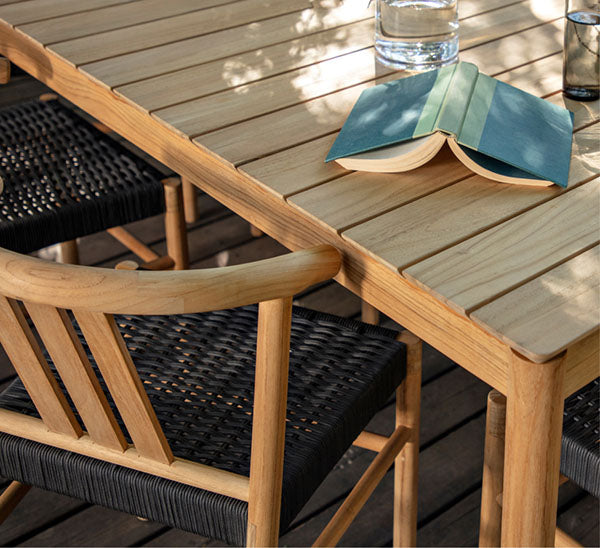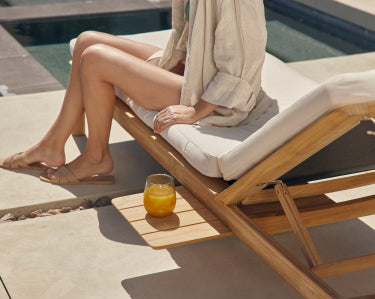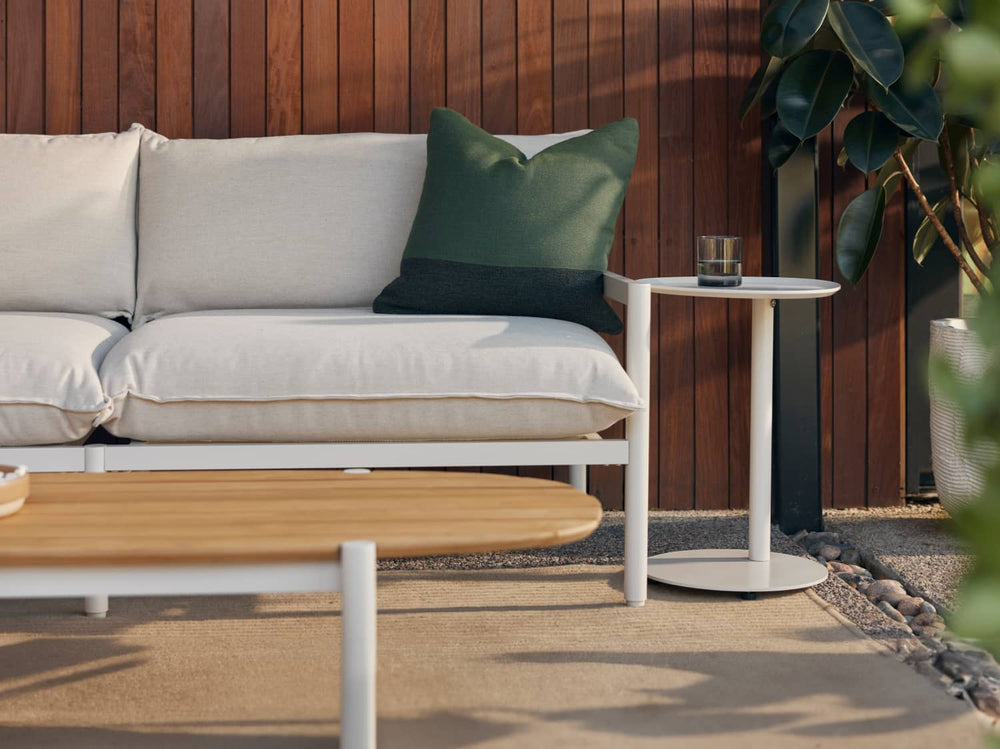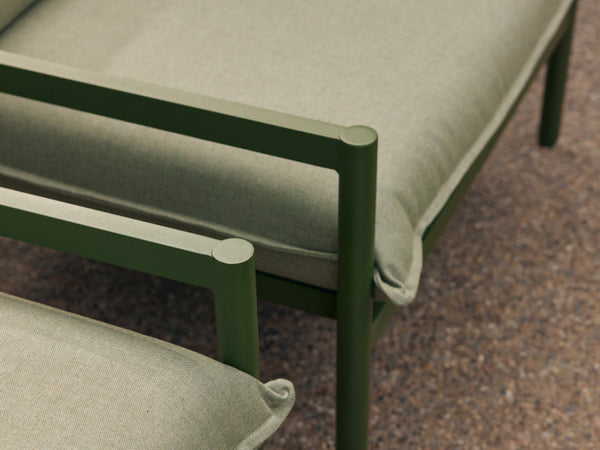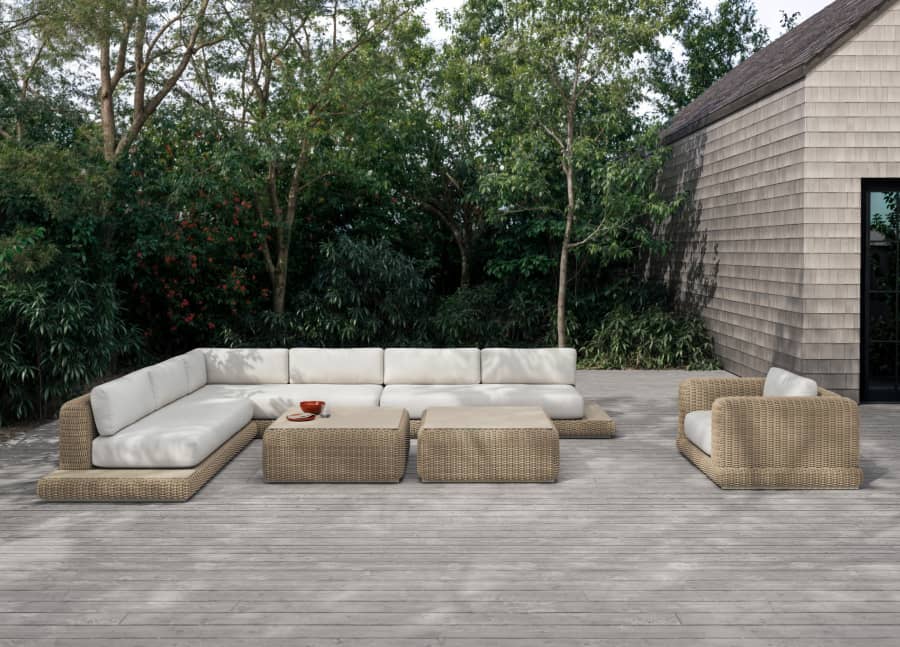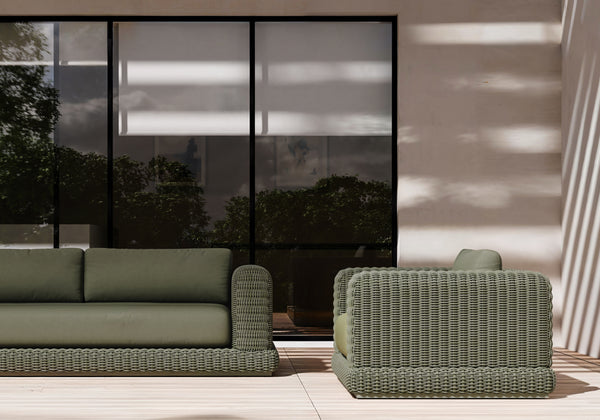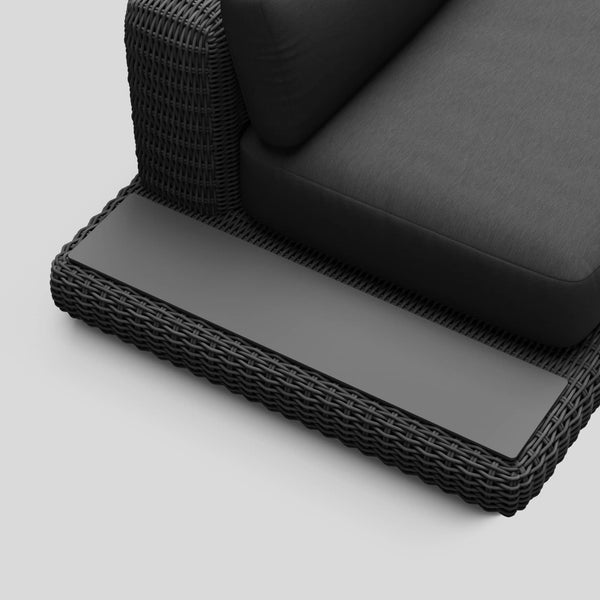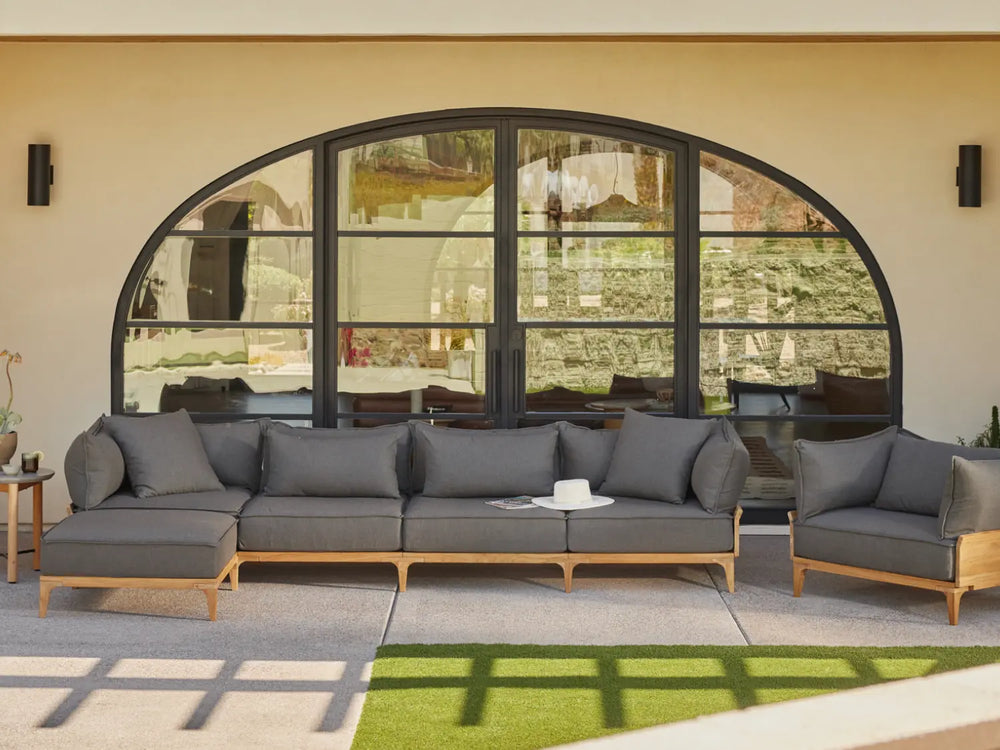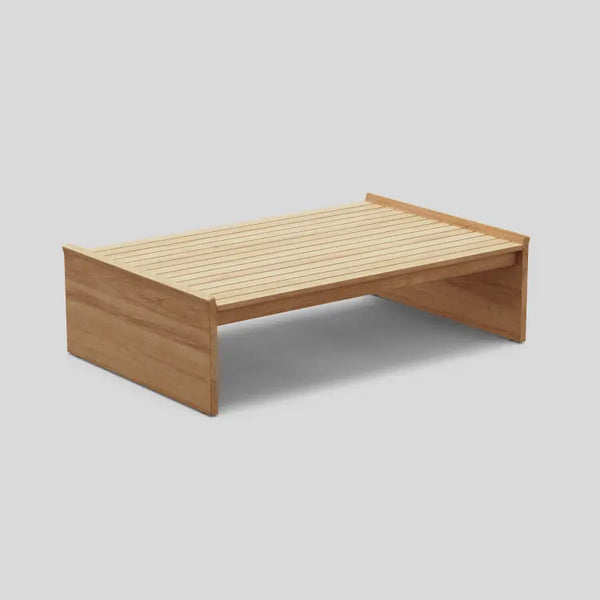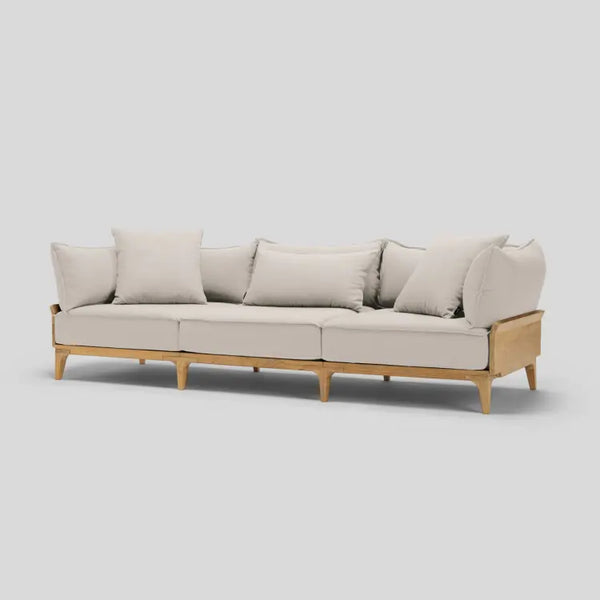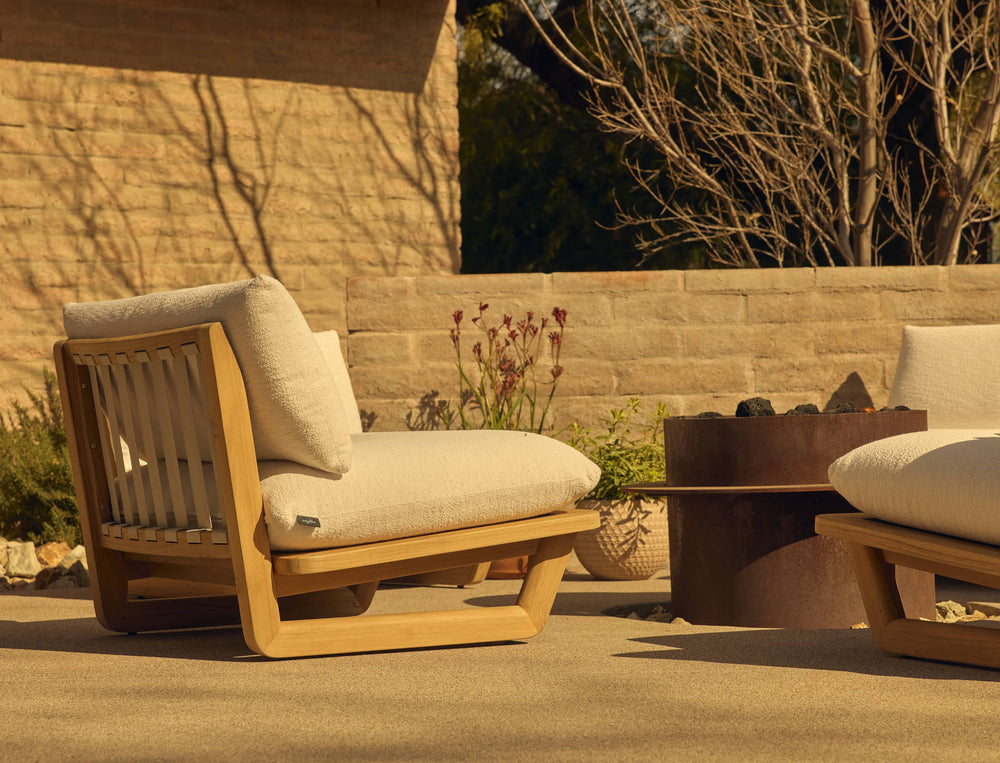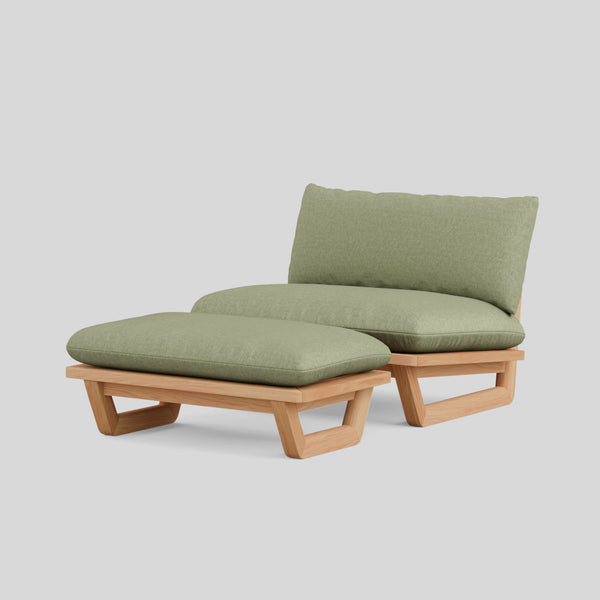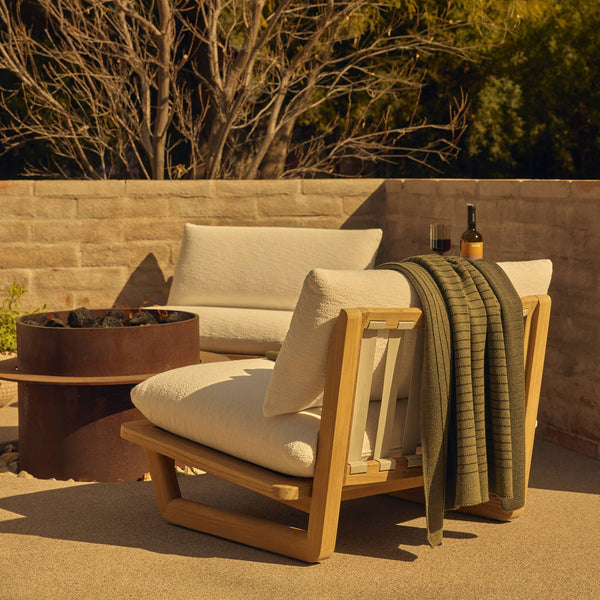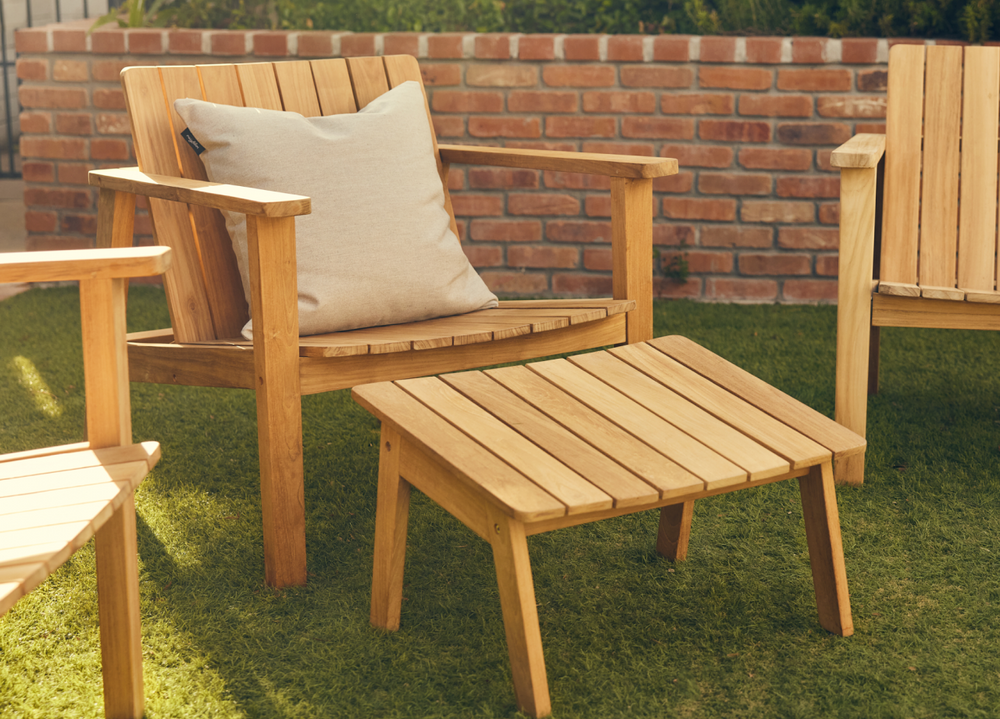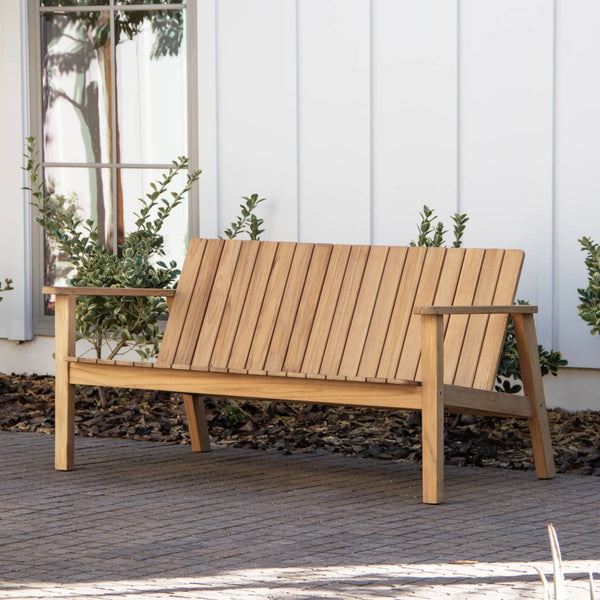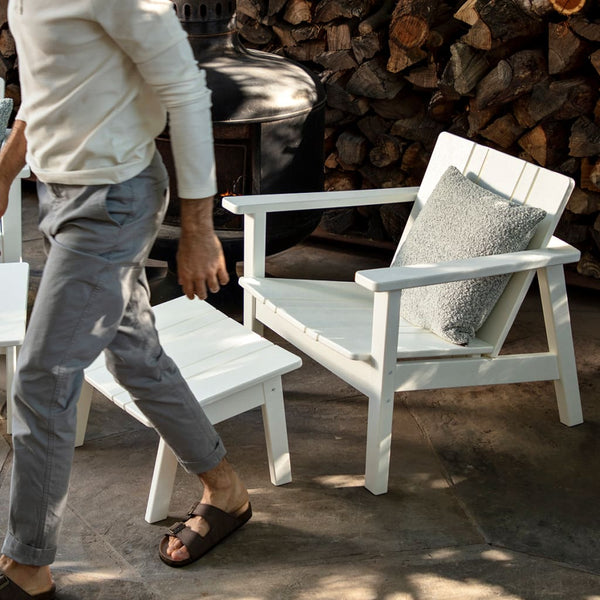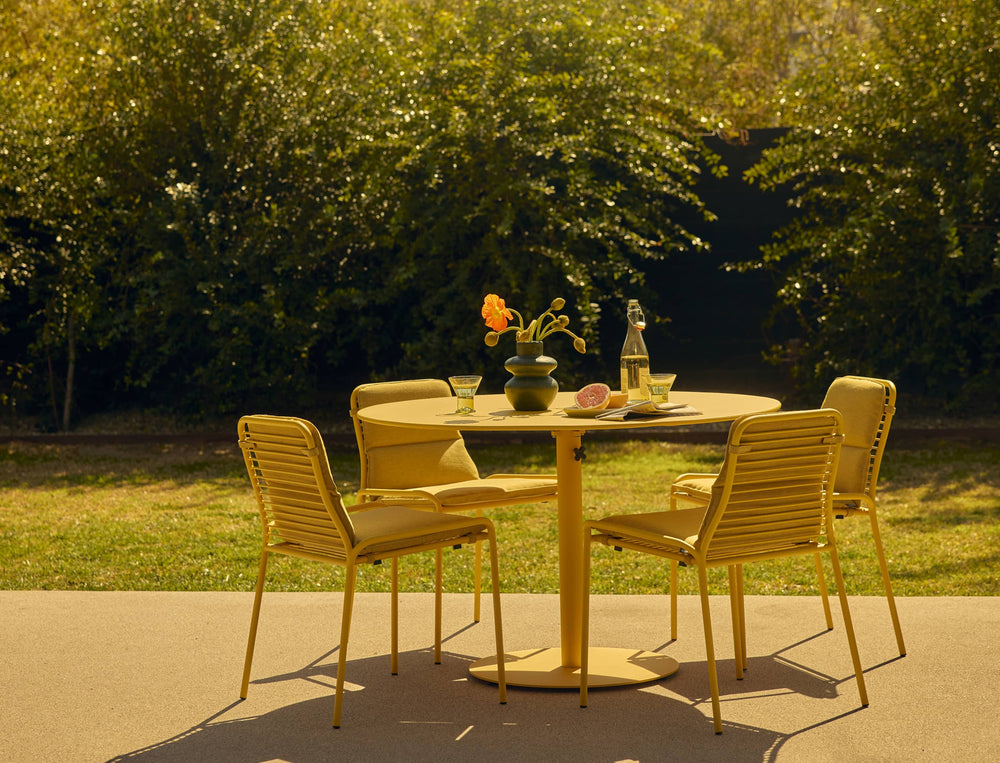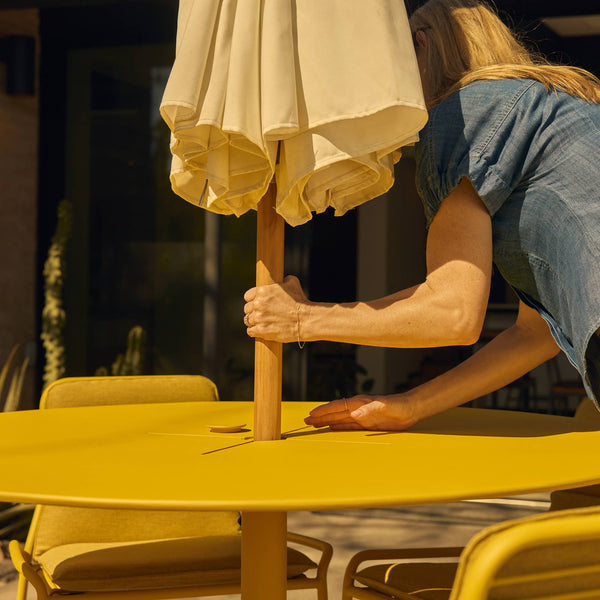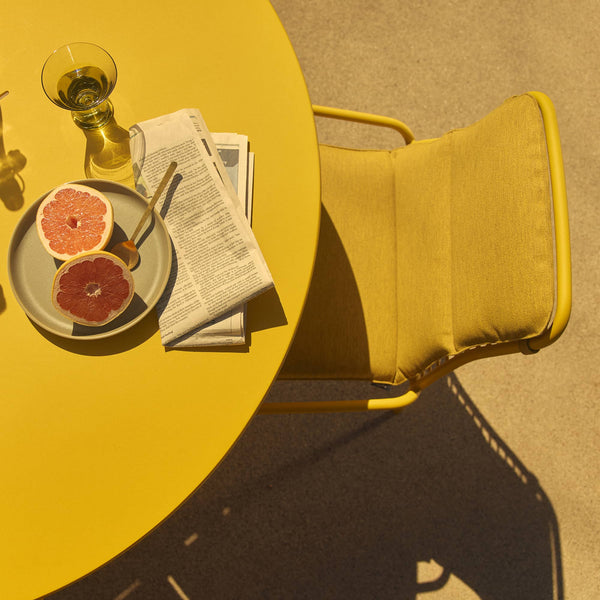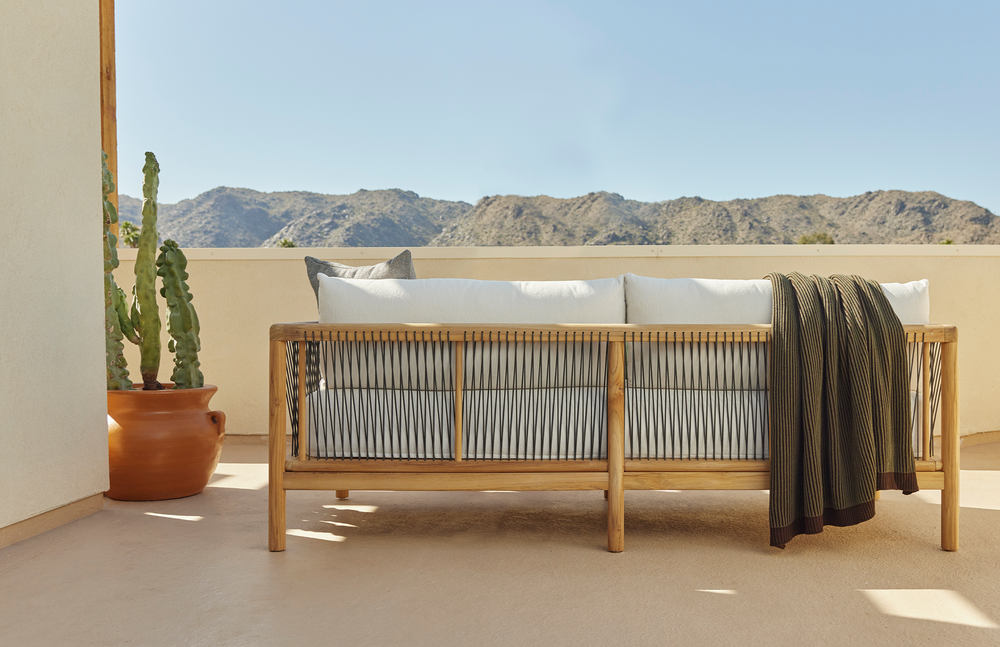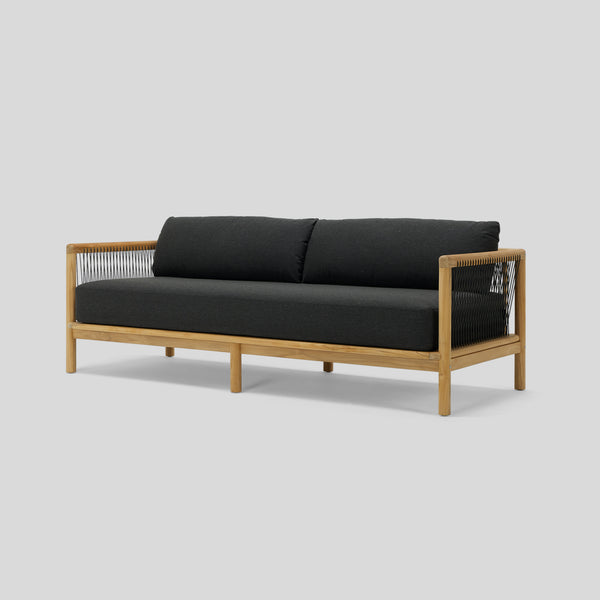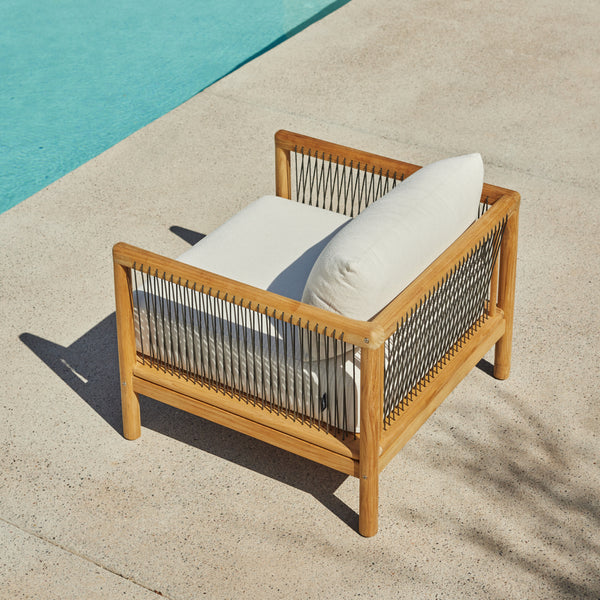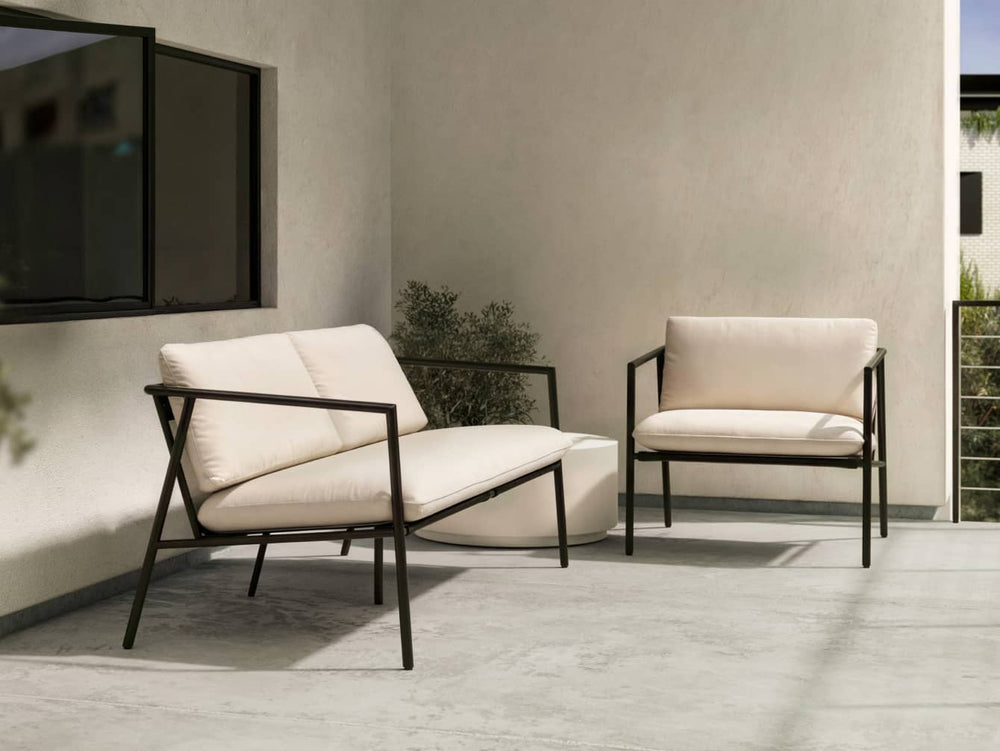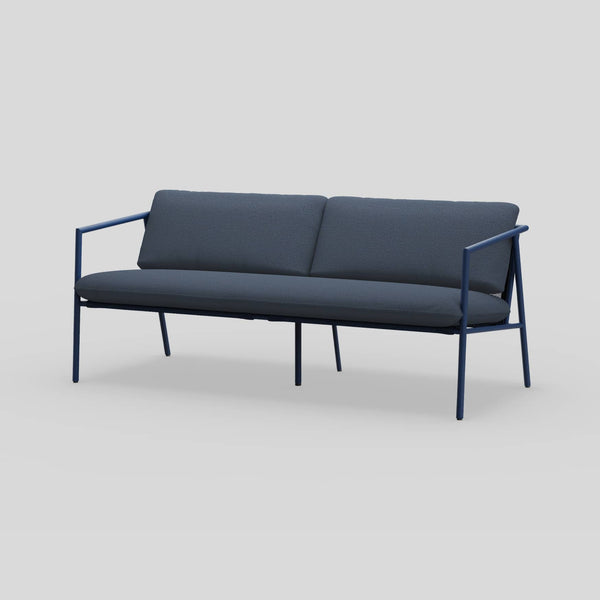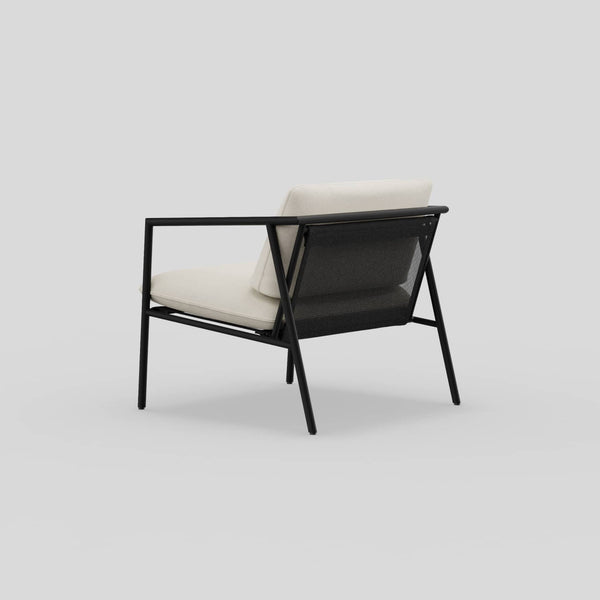Is Wicker Furniture Waterproof? What You Need to Know
Written by Neighbor Editorial Team | @neighboroutdoor | Opens in a new window. |
Learn why natural wicker isn’t waterproof, how synthetic wicker is built for all-weather durability, and what to consider when choosing and caring for outdoor wicker furniture.

Wicker furniture is a popular choice for outdoor spaces, but understanding how it responds to the elements is key to maintaining its beauty and durability over time. In this article, we’ll explore whether wicker is waterproof, the differences between natural and synthetic wicker, and how to protect it from water damage. If you’re considering a collection like Roundabout, which is made with all-weather-resistant wicker, this breakdown will help you understand exactly what that means—and why it matters.
Key Takeaways
- Wicker itself isn’t always waterproof—its resistance depends on the material (natural vs. synthetic).
- Synthetic wicker (like in Neighbor’s Roundabout) is made for all-weather use and is more durable than natural wicker.
- This guide explores differences in materials, maintenance tips, and how to choose the best waterproof wicker for your space.

What Does “Waterproof” Really Mean for Outdoor Furniture?
When shopping for durable outdoor furniture, terms like waterproof, weatherproof, and water-resistant are often used, but not always well-defined. Labeling furniture as waterproof can be misleading, as repeated exposure to the elements will lead to signs of damage.
Instead, look for terms like weatherproof and water-resistant. Weatherproof furniture is designed to withstand the elements—from extreme heat and cold to sun, rain, humidity, or snow. Most weatherproof furniture is also water-resistant, meaning it repels water. Water-resistant material keeps water from absorbing into the surface, which can prevent water damage.
When choosing outdoor furniture that will shine season after season, consider your local climate and how often your furniture will be exposed to rain, humidity, or direct sunlight. The Roundabout Collection is designed with these conditions in mind—made with durable, all-weather wicker that thrives outdoors, rain or shine.
Environmental factors like UV rays, moisture, and fluctuating temperatures can impact how your furniture holds up. Knowing the difference between these terms can save you time researching the right material so you can enjoy the piece in your space.

Is Wicker Furniture Waterproof or Weatherproof?
Wicker furniture can be either waterproof or weatherproof, depending on the materials. Here’s a quick breakdown of what these two terms mean:
-
Waterproof wicker resists all moisture and won’t absorb water. It’s usually made from synthetic materials like resin or PVC and can be left outside in heavy rain.
- Weatherproof wicker holds up against sun, humidity, and light rain. It may be made from treated natural fibers or synthetic blends and is best stored or covered during harsh weather.
Man-made synthetic resin wicker is both water-resistant and weatherproof. Synthetic wicker is considered the all-weather wicker and is made of high-density polyethylene (HDPE). HDPE is a synthetic resin designed to withstand rain, fading from UV rays, and humidity, making it both durable and functional.
Choosing the right type of wicker material is important based on how the furniture will be used. Natural wicker may work well if you know its location will limit exposure to environmental stressors, like sun, rain, and snow.
If you’re looking for furniture that can withstand the elements for prolonged use, synthetic wicker is best due to its all-weather durability. Neighbor’s Roundabout Collection is a great example—crafted from HDPE wicker, it’s built for year-round exposure without sacrificing style or comfort.

Types of Wicker: Which Ones Can Get Wet?
Natural wicker is not water-resistant because it’s made from organic plant fibers that absorb moisture and can degrade over time. When not protected against outdoor elements like rain, sun, and snow, natural wicker can dry, fade, rot, or mold. Outdoor natural wicker furniture must be kept under covered areas or brought inside to prevent water damage.
Synthetic wicker (HDPE) is made from polyethylene-based materials. Polyethylene acts as a UV inhibitor that keeps wicker strong and durable, making it well-suited to withstand the elements. HDPE resin wicker is non-porous, giving it a water-resistant coating suitable for year-round use outdoors.
Natural vs. Synthetic Wicker
| Feature | Natural Wicker | Synthetic Wicker (Resin/HDPE) |
| Material | Made of plant-based fibers like bamboo, reed, or willow. | Man-made synthetic wicker made from high-density polyethylene (HDPE) or resin-based wicker. |
| Water-resistance | Organic material is porous and absorbs moisture, making it prone to water damage. | Polyethylene material repels water, making it water-resistant. |
| Outdoor durability | Long-term sun exposure can cause natural wicker to dry, crack, or fade. | Synthetic wicker is often UV-treated to resist fading and brittleness. Synthetic colorant is contained throughout the material, helping the color stay vibrant from the inside out. |
| Maintenance needs | To protect the material, natural wicker requires covering, sealing, and indoor storage. | Synthetic wicker requires minimal maintenance. Just clean with soap and water once at the end of each season, and you can go back to relaxing on your outdoor furniture. |
| Comfort & Aesthetic | Natural wicker is loved for its handwoven texture and more traditional look and feel. | Synthetic wicker mimics the look of natural wicker with the bonus of improved durability and longevity. |
| Eco-friendliness | Due to its organic material, natural wicker is biodegradable. However, given its short lifespan, it can be a less sustainable option. | HDPE is often made from recycled plastics and can sometimes be recycled again. Its longer lifespan means you can enjoy your outdoor synthetic wicker pieces for longer, helping reduce waste. |
| Cost | Natural wicker, especially handcrafted or antique options, can be pricier. | Designed to last year-round, synthetic wicker marries affordability with durability. Its weather resilience typically makes it a more affordable option for outdoor sets. |
| Ideal use | Natural wicker is best used in enclosed patios, sunrooms and indoor/outdoor crossover space to preserve its longevity. | Synthetic wicker is designed for full outdoor exposure from patios to poolside and decks, synthetic wicker is a high-grade, fade-proof, all-weather wicker. |
Can Wicker Furniture Be Left Outside in the Rain?
Wicker furniture can handle the occasional rainy day, depending on its material. Synthetic wicker is designed to be water-resistant, meaning it can withstand being left outside in the rain—just like the high-performance materials used in our Roundabout Collection. The same can’t be said of natural wicker, which requires being moved to an indoor space or covered during a rainstorm.
But it's not just about the wicker material itself—the cushions and frames are just as important. Look for rust-resistant frames, like powder-coated aluminum, that are quick-drying and withstand the elements. The right cushions, like our quick-drying foam cushions, are engineered for outdoor use. This allows water to flow through the foam without being trapped, preventing mold or mildew.
Neighbor products are built to last, but a little TLC goes a long way to care for your favorite pieces. Outdoor furniture covers can keep the frame and cushions dry during a storm, extending the longevity of your favorite pieces. While covering your synthetic wicker outdoor furniture pieces during a rainstorm is not mandatory, covering them during rain, snow, or ice can safeguard against dew and moisture.

How to Protect Wicker Furniture from the Elements
Wicker furniture adds natural charm to any outdoor space, but it needs proper care to withstand the elements. With the right protection, you can extend its life and keep it looking beautiful season after season.
Use Furniture Covers
One of the easiest, most effective ways to protect wicker furniture is with furniture covers. Designed with durability in mind, our weather-resistant furniture covers protect the frame and cushions against the elements. Whether you’re using it in the off-season or to protect against unpredictable weather, Neighbor’s outdoor furniture covers keep your favorite pieces protected, clean, and dry for year-round use.
Elevate the Furniture
Keeping your wicker furniture slightly elevated can make a big difference, particularly if your patio or deck gathers puddles after rain. Opt for frames raised off the ground to avoid your furniture piling up with water, mud, dirt, and debris.
Regular Cleaning Tips
Spending time scrubbing is unnecessary with synthetic wicker outdoor furniture. Known for minimal maintenance, synthetic wicker pieces need a quick wipedown with soap and water between seasons. For more in-depth care tips to extend the life of your favorite pieces, check out our outdoor furniture guide.

How Long Does Wicker Last Outside?
The longevity of outdoor wicker furniture depends on the material it's made of. Natural wicker is not designed to withstand harsh or long-term outdoor conditions. Left in the sun or exposed to rain and snow, natural wicker can fade, crack, or grow mold and mildew.
Synthetic wicker (HDPE in particular) is known for its weather-resistance, designed to last year-round outdoors. Designed to resist UV rays, moisture, and fluctuating weather changes, synthetic wicker can last 10 years or more with the right TLC, like proper cleaning and protection as needed.
FAQs About Waterproof Wicker
How waterproof is wicker?
Synthetic wicker is a strong, water-resistant material, making it ideal for outdoor furniture that is all-weather and low-maintenance. However, proper care should still be followed to prolong its lifespan.
What happens if wicker gets wet?
When natural wicker gets wet, it may rot or warp due to its organic, porous material that absorbs water. However, synthetic wicker is water-resistant, dries quickly and resists damage after a quick rain shower or a sprinkler mishap.
Can you leave the wicker outside all year round?
Yes, you can leave synthetic wicker outside 365 days a year. Known for its all-weather durability and water resistance, most outdoor conditions like the sun, rain, or snow won’t damage your synthetic wicker furniture. It even performs well in cold winter environments, unlike wood, which is prone to splitting when it comes into contact with ice. A little TLC and proper care, like outdoor furniture covers and a simple cleaning routine, can help protect and extend the longevity of your favorite outdoor pieces.

What to Look for in Weatherproof Wicker Furniture
When shopping for weatherproof wicker furniture, it's important to consider a few key factors that ensure durability and long-lasting performance. Let’s discuss what to look for to make sure your furniture can withstand the elements and maintain its beauty.
Frame Materials Matter
When shopping for weather wicker furniture, what’s underneath the weave matters. The frame plays a huge role in how your furniture holds up outdoors. Aluminum is sought after for its rust-proof, weather-resistant, and low-maintenance properties. Steel takes the cake for durability and functionality in any outdoor space. Teak is the gold standard of wood, boasting impressive water-repellent qualities and durability, however, it does come with a higher cost. If you're weighing your options, this guide on aluminum vs. steel patio furniture can help you choose the best material for your space.
UV-Resistant Resin and Weave Quality
To keep your outdoor wicker pieces looking as vibrant as they were on day one, look for UV-resistant resin with built-in UV inhibitors. These additives help prevent fading, cracking, or brittleness caused by prolonged sun exposure. A thicker, tighter weave adds strength and helps the furniture keep its structure season after season. Together, UV-resistant resin and a solid weave mean your furniture won’t just survive the sun—it’ll look good in it.
Cushions & Fabric Considerations
Even though Neighbor outdoor wicker furniture is built with high-grade, all-weather wicker, the right cushions and fabrics can transform outdoor furniture. Look for quick-dry foam and fade-resistant fabric from brands like outdoor fabric industry leader Sunbrella®, which delivers high-performance against all weather conditions without sacrificing beauty.

When (And Why) to Choose Neighbor’s All-Weather Wicker
The Roundabout Collection from Neighbor isn’t your average wicker—it's a whole new way to wicker. This premium-grade, all-weather synthetic wicker marries durability, sustainability, and low-maintenance features for those who love gathering outdoors. And of course, our design-first, modular approach to outdoor living continues to seamlessly bridge form and function. It’s in our DNA—and now in our elevated, all-weather, synthetic wicker. Explore the Roundabout Collection.

